“Louis Raemaekers cartoons constitute the most powerful contribution made by neutrals to the cause of civilization in the World War.”
– Theodore Roosevelt
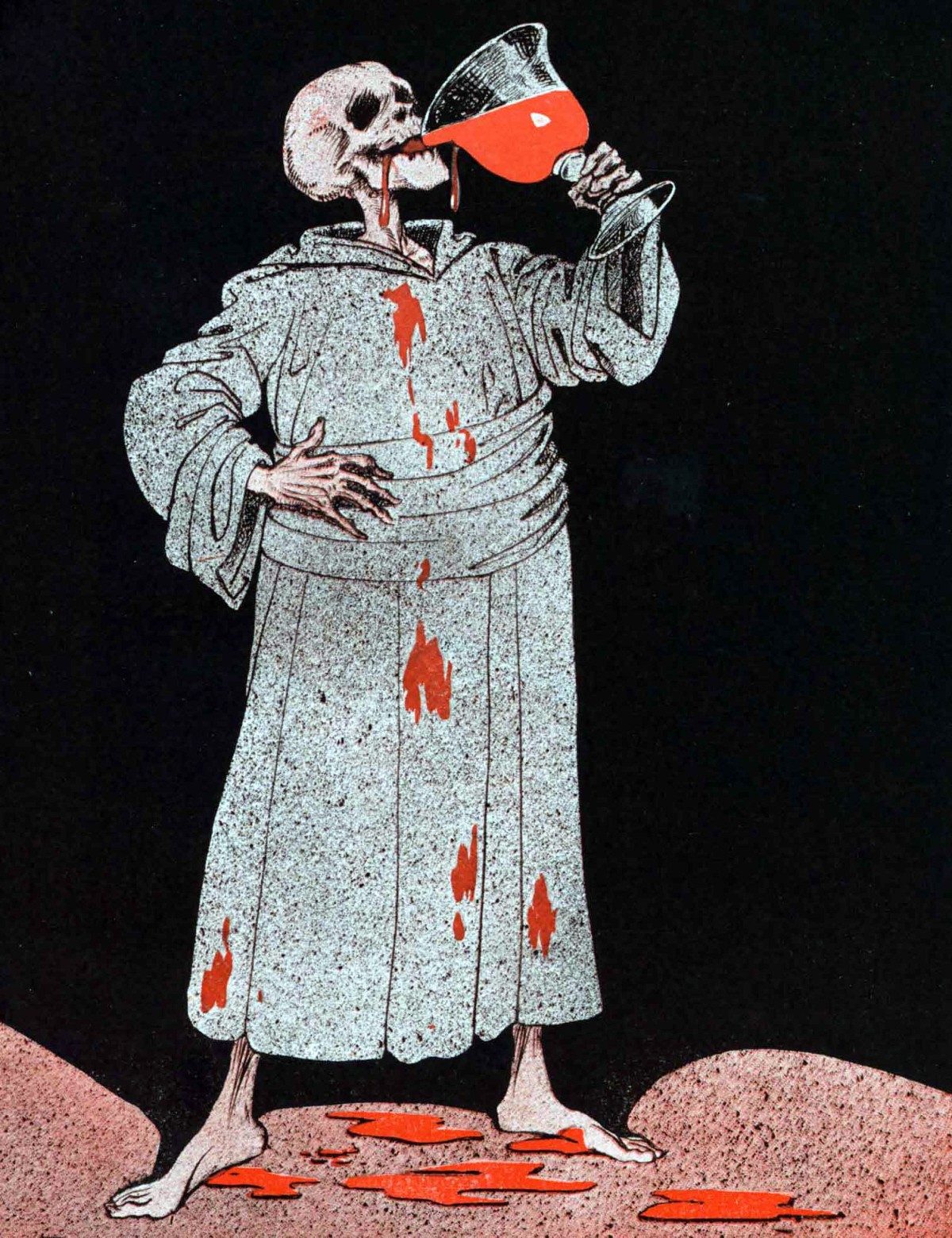
‘To your health civilisation’ – by Louis Raemaekers
So committed to peace was Dutch Great War cartoonist Louis Raemaekers (1869-1956) that Germany promised 12,000 gilders to anyone who brought them the pacifist dead or alive. Well, so the story goes. Propaganda can be based on some truth, and with Germany’s enemies employing Raemaekers’ art to boost their wars with illustrations of atrocities, facts and rumour can and do converge. The effect is powerful. Images of a murderous and inglorious war stick.
We do know that his work was confiscated on several occasions by the Dutch government and he was criticized for endangering the country’s neutrality. The Dutch minister of Foreign Affairs John Loudon invited Raemaekers, the owners of De Telegraaf, the newspaper where Raemaekers’ biting cartoons often appeared across the entire front page, to a meeting at which he requested them to avoid “anything that tends towards insulting the German Kaiser and the German army.” A few days later, the German Kaiser was once more depicted as Satan’s pal at the head of a porcine, blood-soaked army.
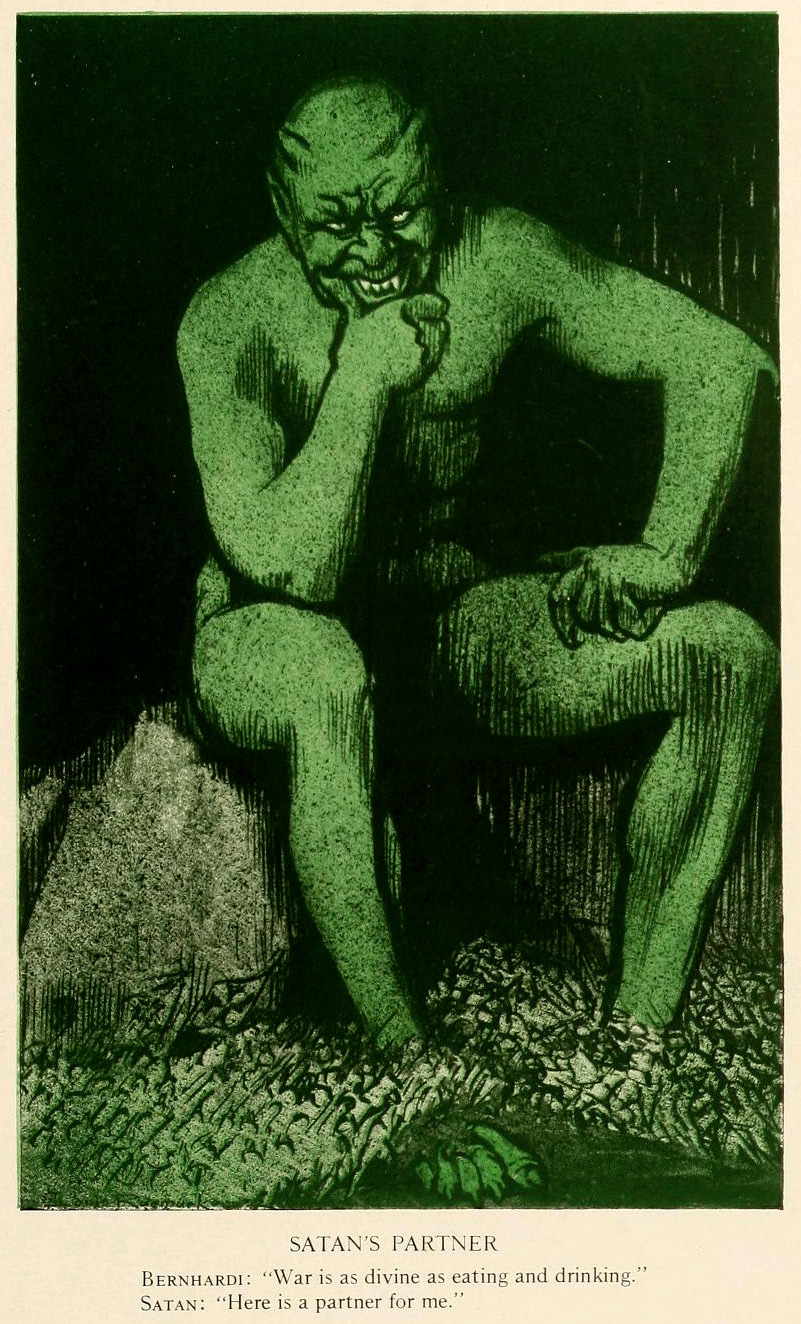
Louis Raemaekers (1869-1956), ‘Satan’s Partner’, ”Raemaekers’ Cartoons”, 1916
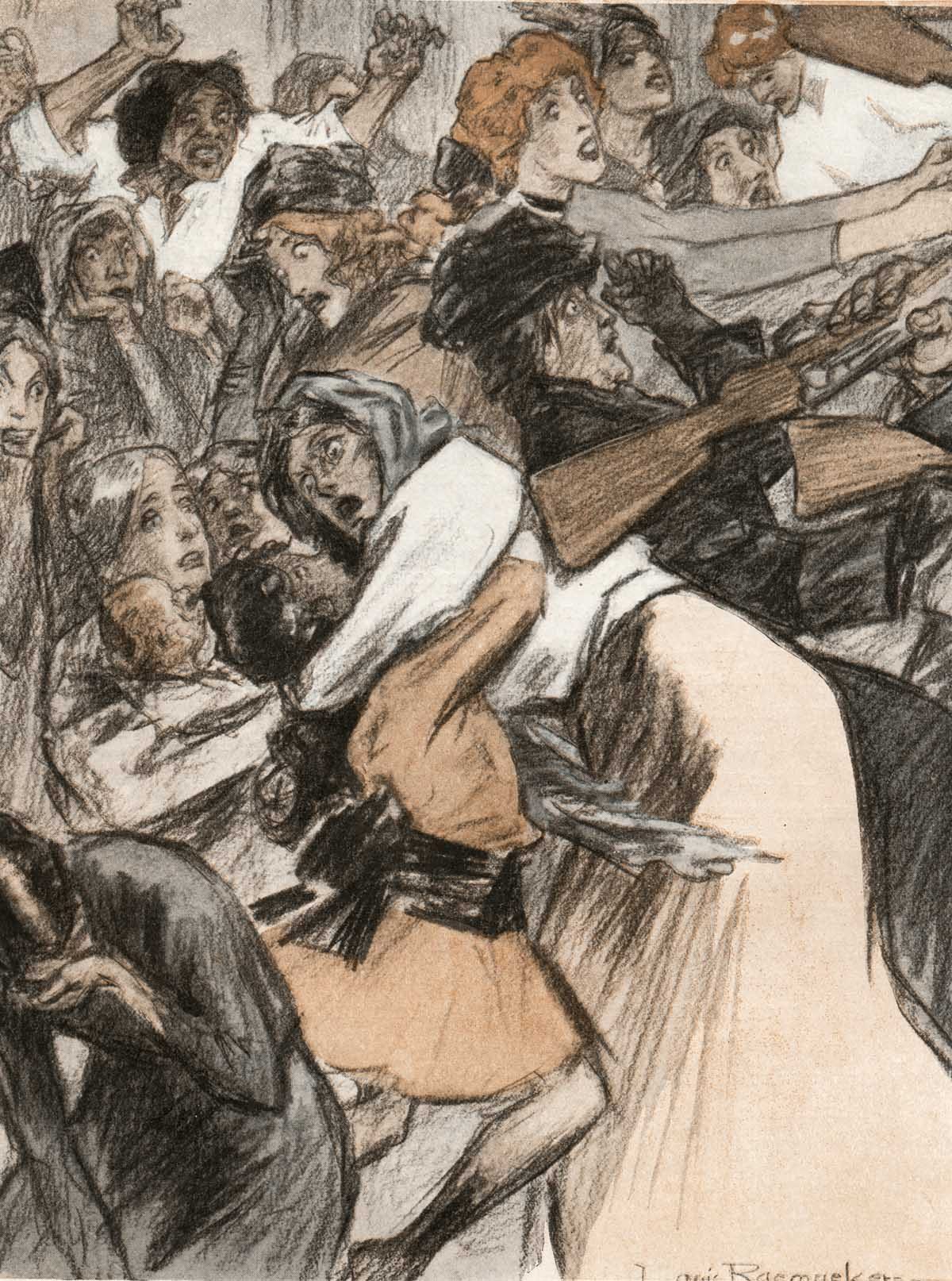
The Massacre of the Innocents in Belgium – “All in good order. Men to the right, women to the left.”
The Allied Powers noticed his work. In November 1915, Raemaekers arrived in London. His pictures were displayed at the Fine Art Society on Bond Street. According to the Fine Art Society’s pamphlet of February / March 1916, Raemaekers’ work “formed the subject of pulpit addresses, and during two months, the galleries where they have been exhibited have been thronged to excess. Practically every cartoon has been purchased at considerable prices.”
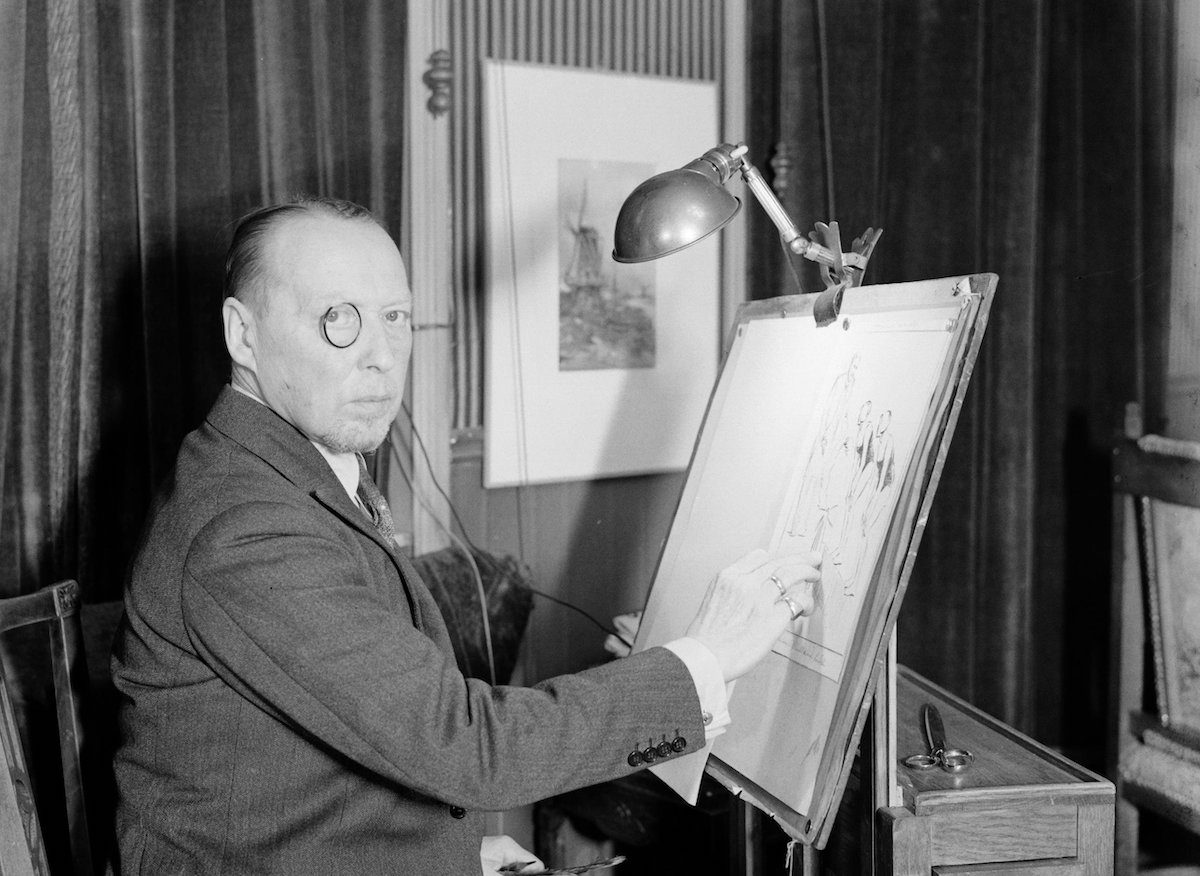
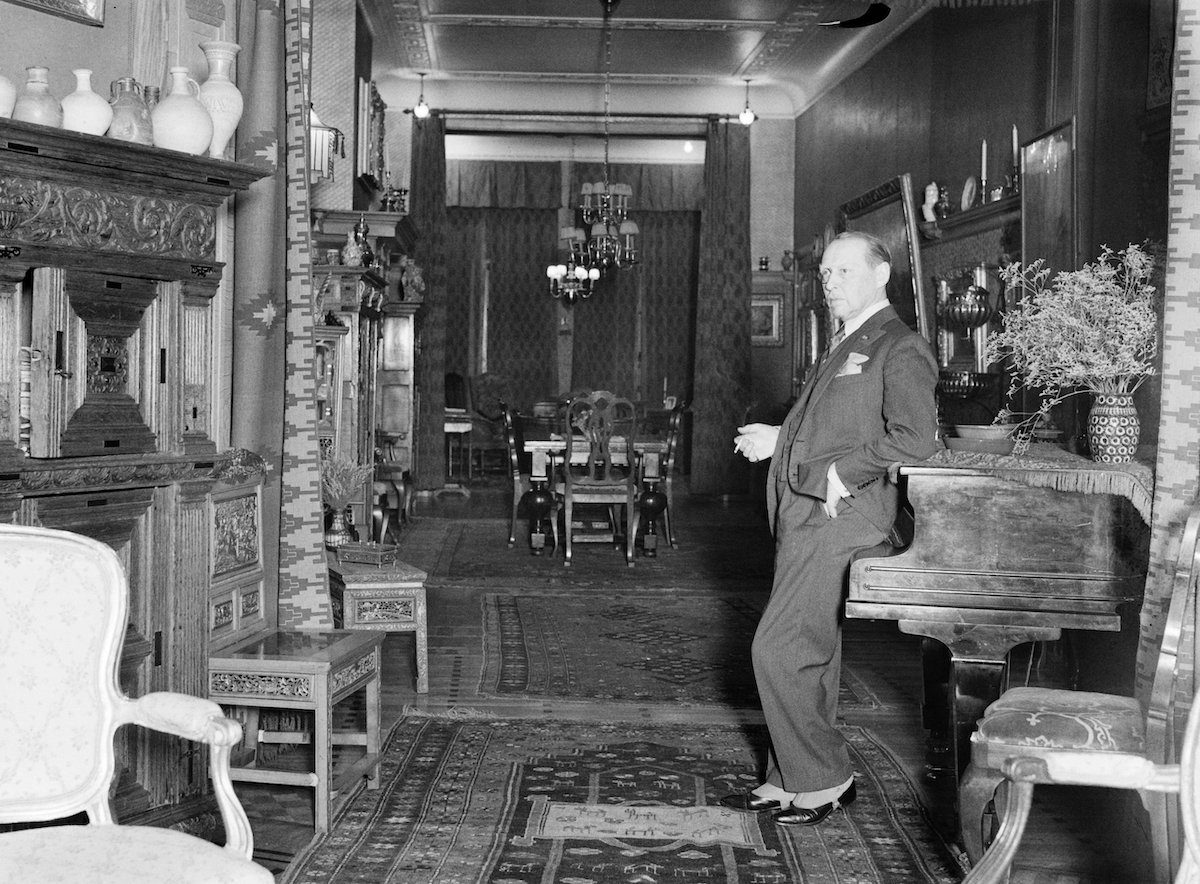
In 1916, Raemaekers signed a contract with the Daily Mail newspaper and was recruited by Wellington House, Britain’s War Propaganda Bureau, an agency so secret that most MPs did not know it existed. It worked behind the offices of the National Insurance Department, which was used as a front.
Raemaekers’ message of human suffering at the hands of Germany featured in talks, live cartoon drawings, stage shows, books, pamphlets, postcards and on cards slipped into packets of cigarettes. In July 1917, sponsored by Wellington House, Raemaekers made his first visit to the USA.
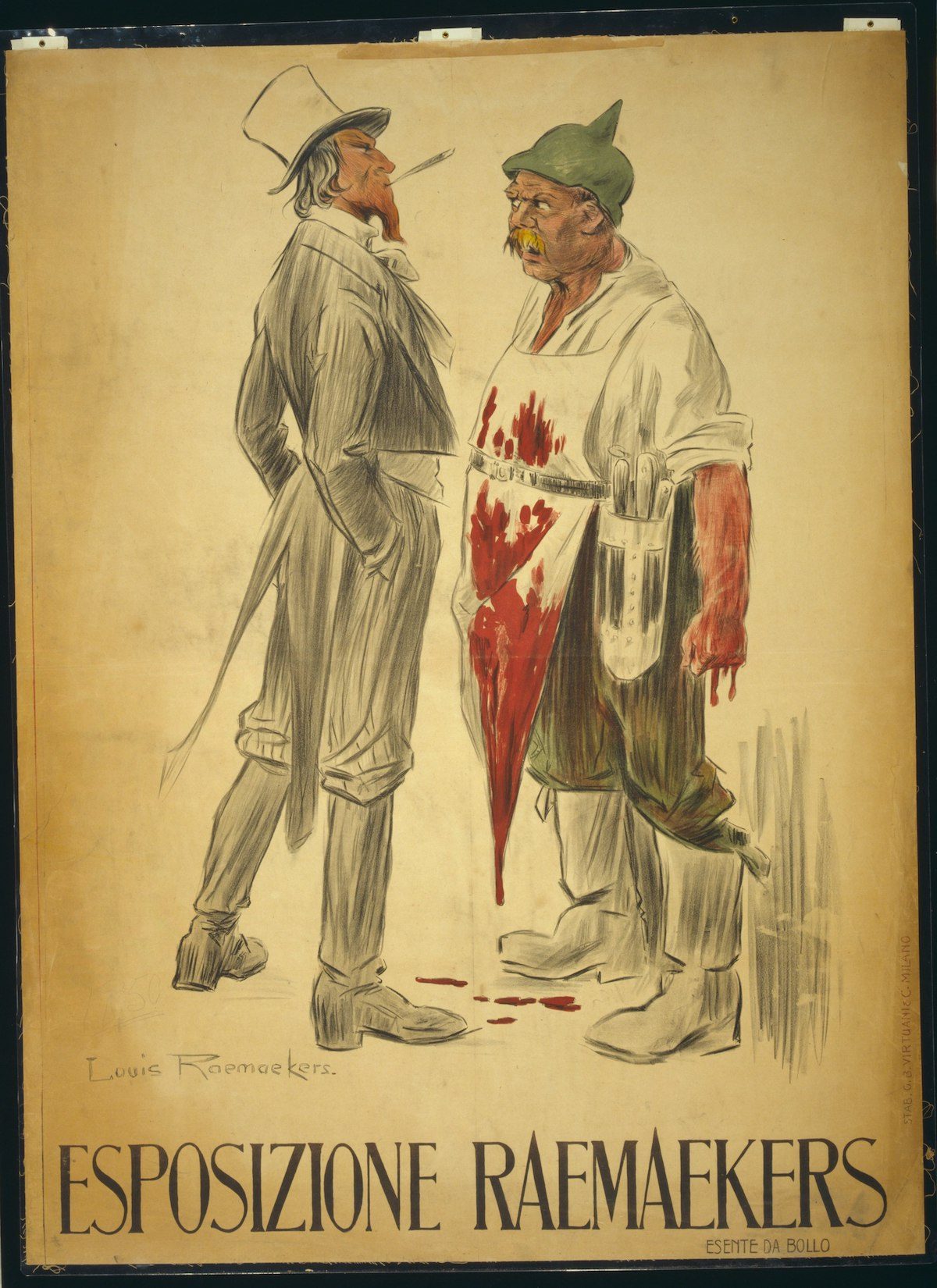
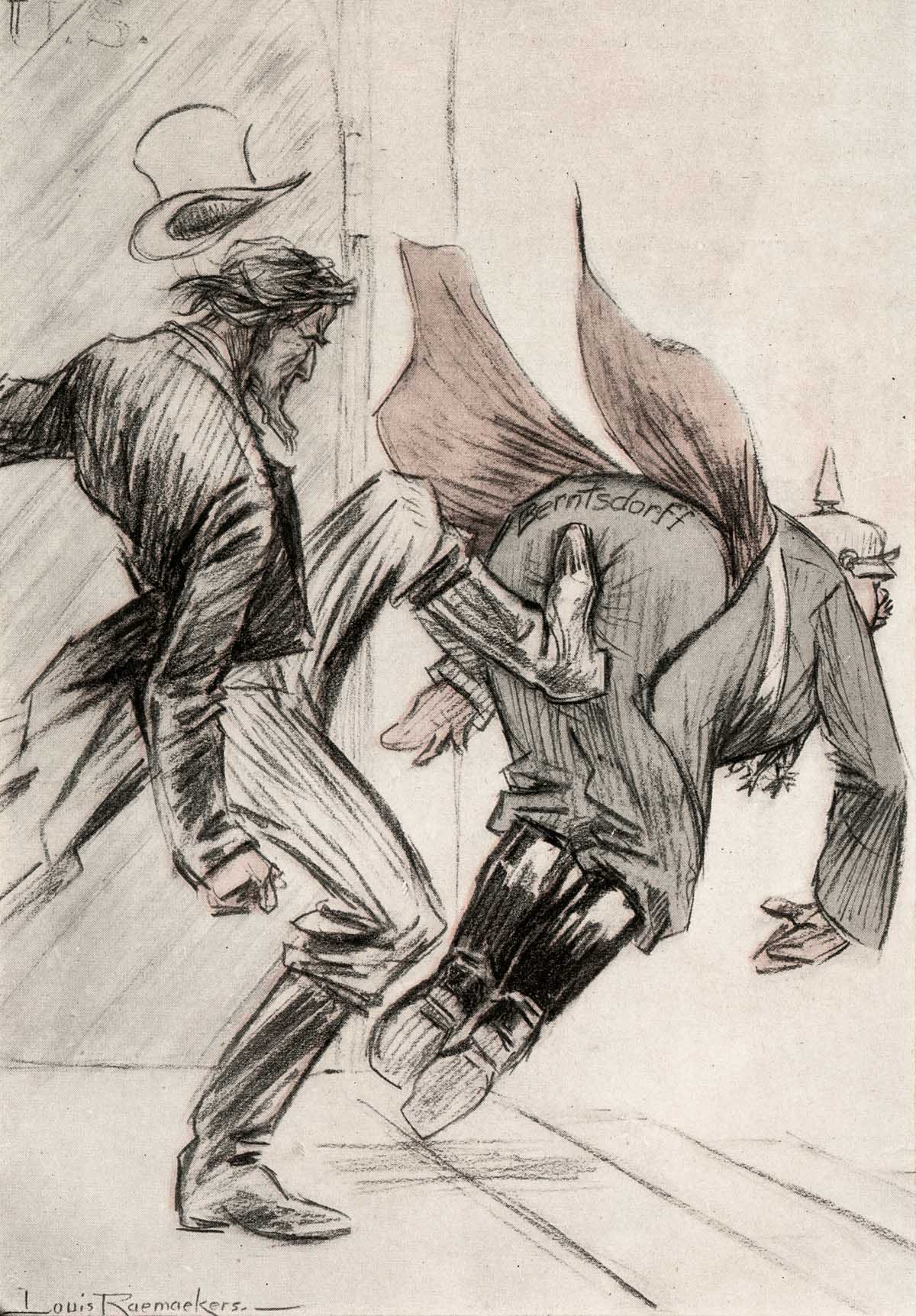
The United States had declared war on Germany shortly before the trip, and the Allies hoped that his presence would sway public opinion to their cause.Raemaekers gave lectures and interviews, drew caricatures for the movie cameras, was a popular guest at society functions, and met President Woodrow Wilson and former President Theodore Roosevelt. Soon after his arrival he signed a contract with the International News Service, the syndicate of William Randolph Hearst. Hearst newspapers were viewed as pro-German and had been cut off from all Allied news sources. But Raemaekers thought “this is the most important target group because the readers are poisoned daily by tendentious articles”.
Raemaekers’ cartoon commentary on the depravity of the First World War was compiled in Raemaekers’ Cartoons. Each cartoon of Raemaekers’ is accompanied by a passage from well-known writers at the time. Published by Doubleday, it really was the work of the British War Propaganda Bureau. The book was translated and distributed in many neutral countries at the time.

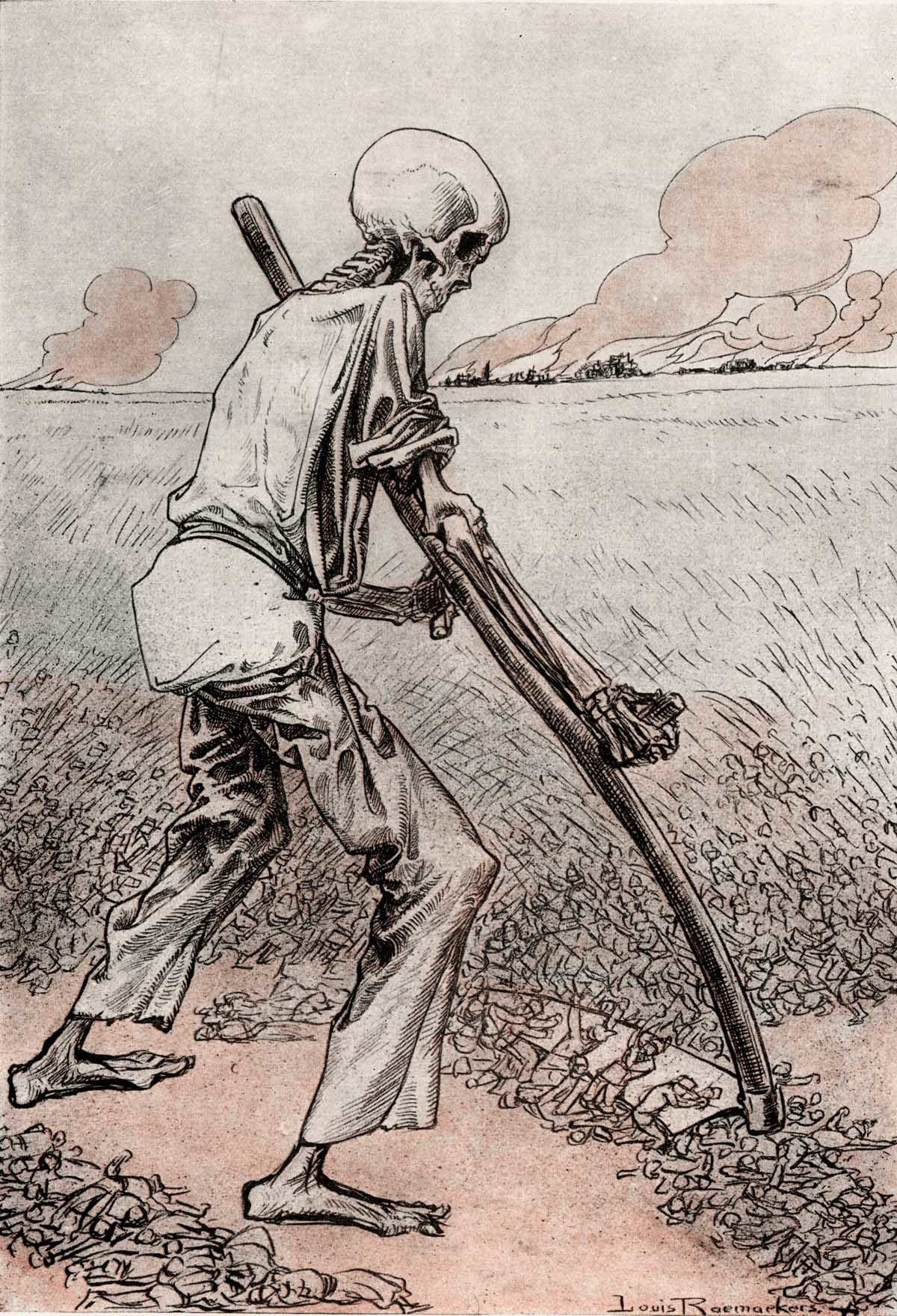
‘The Harvest Is Ripe’ – 1914
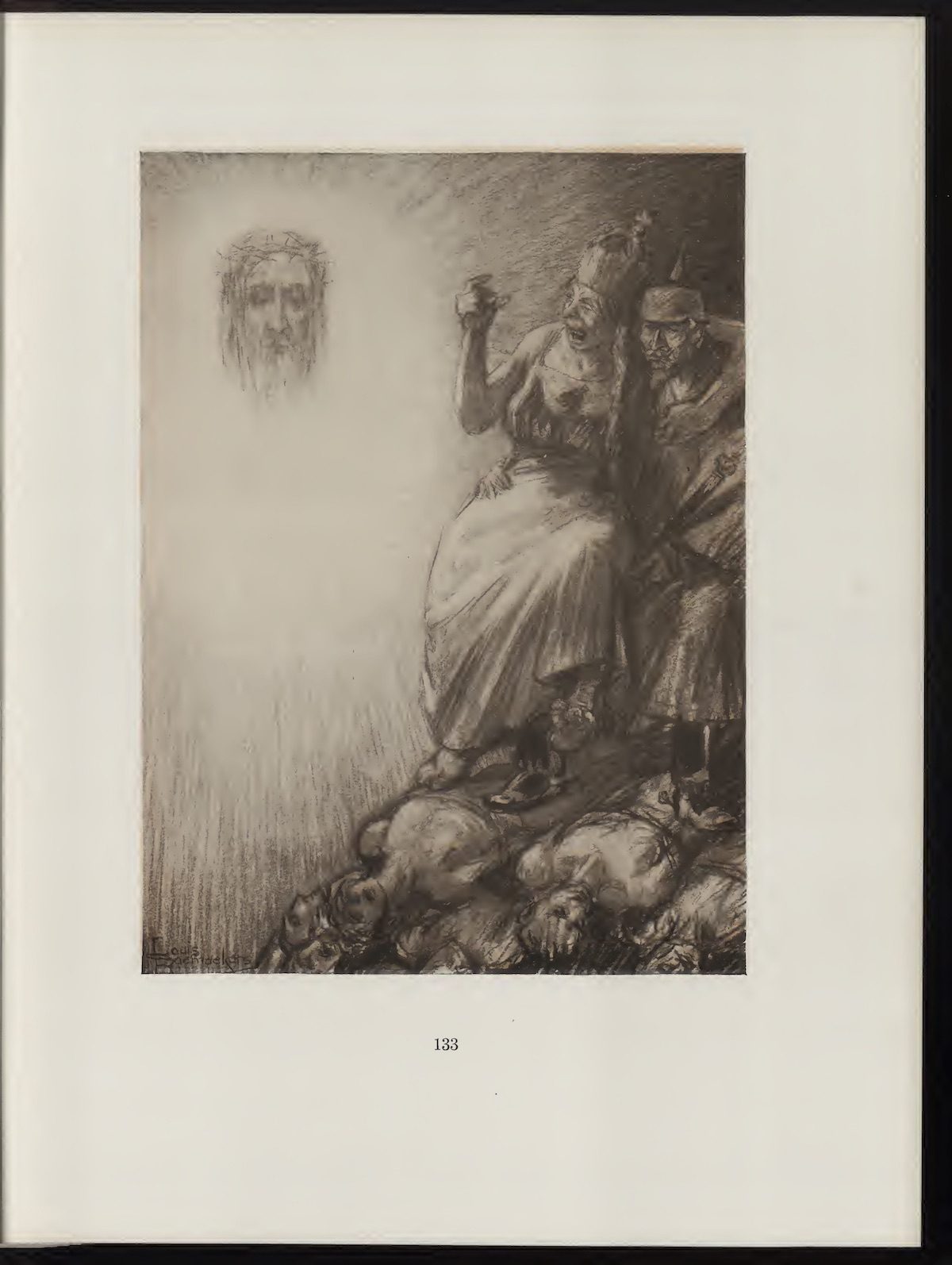
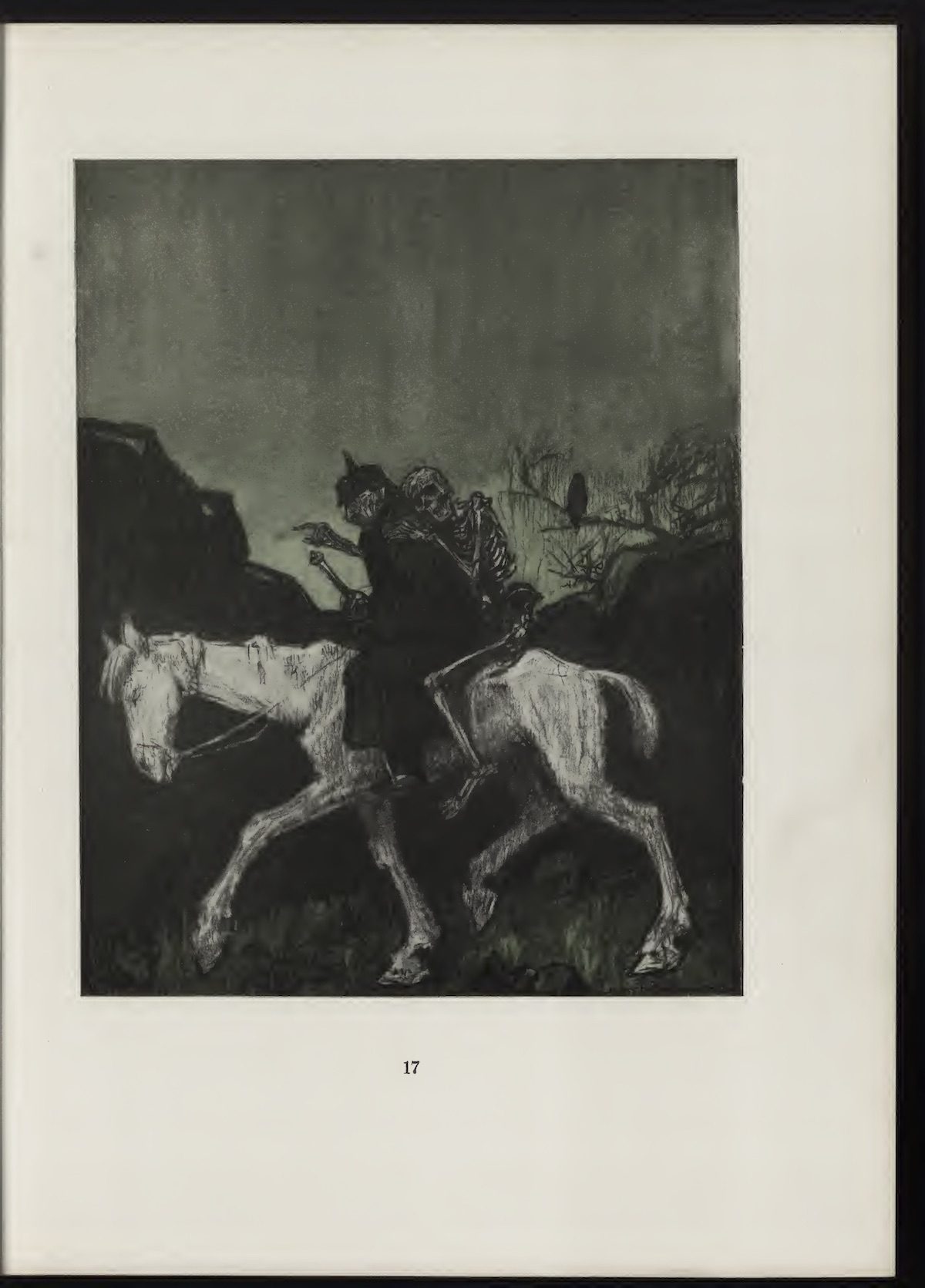
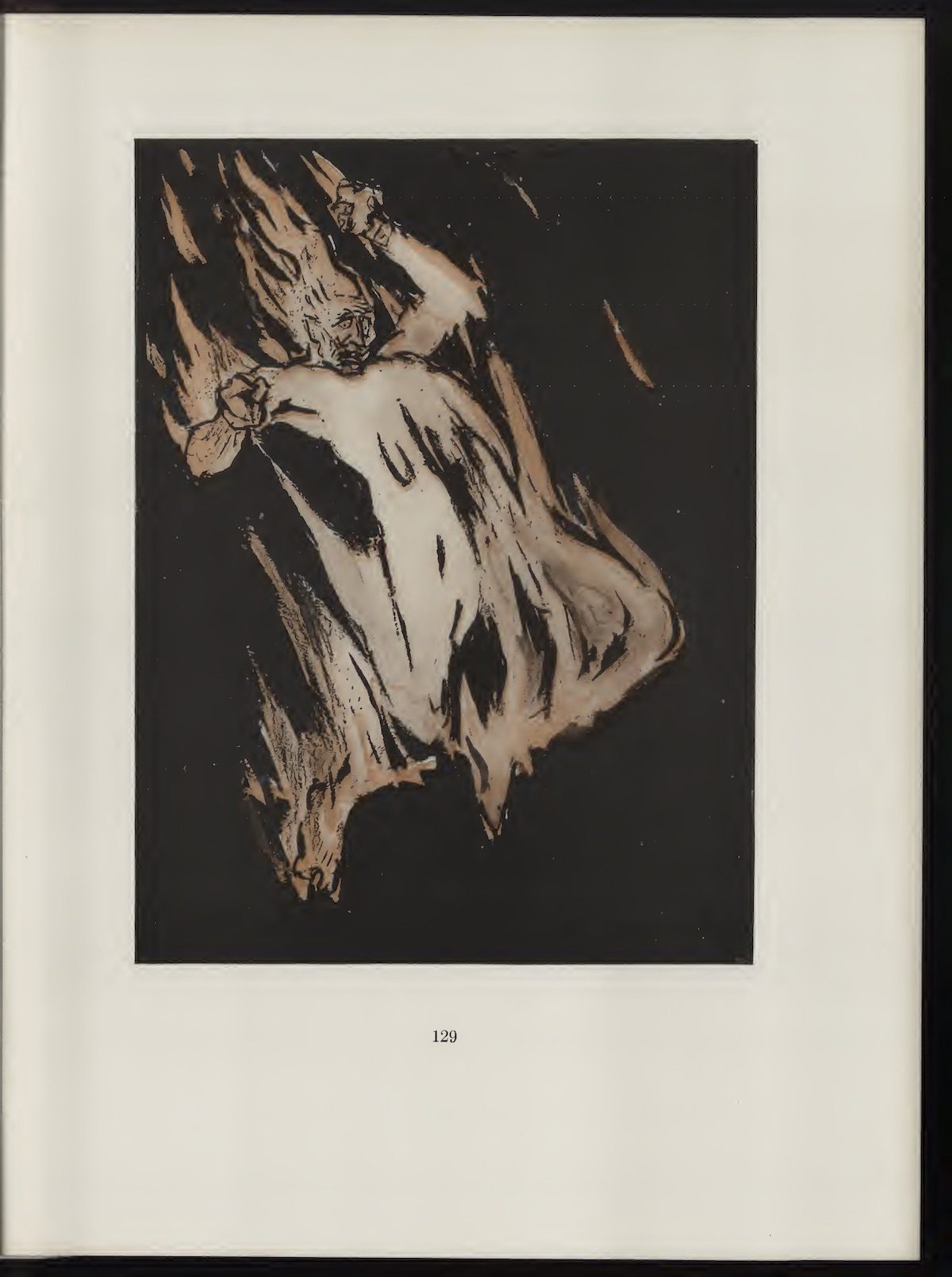
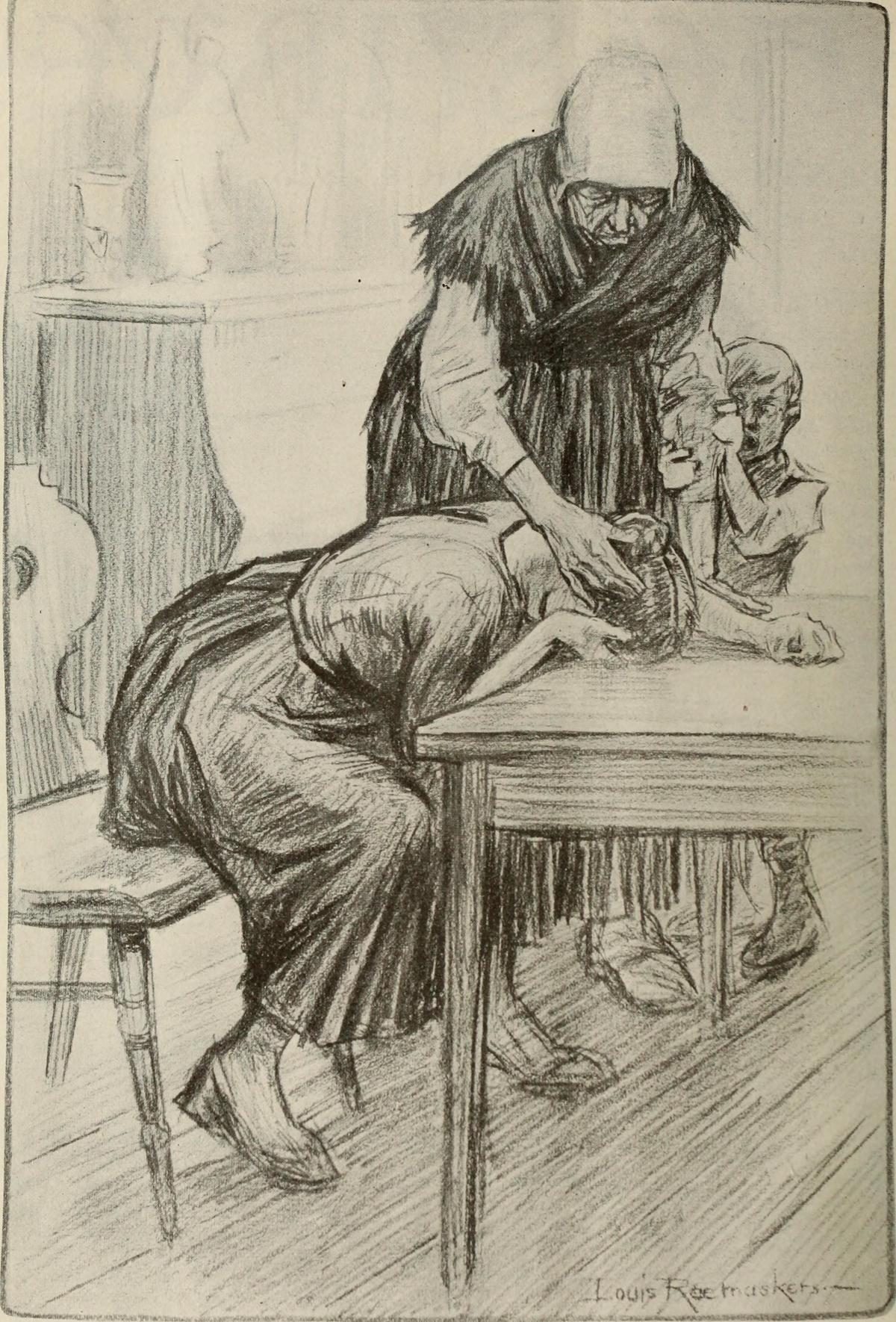
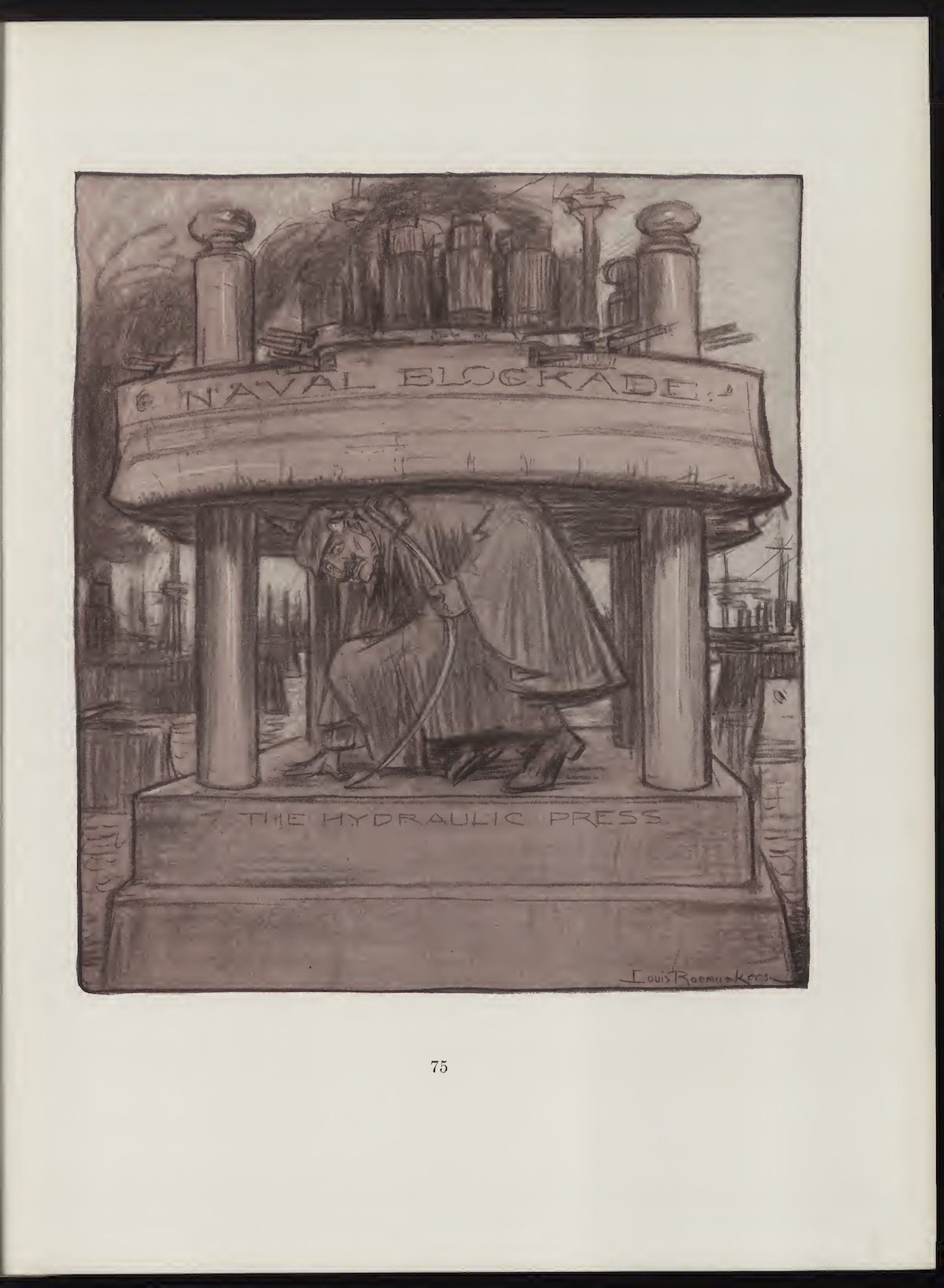


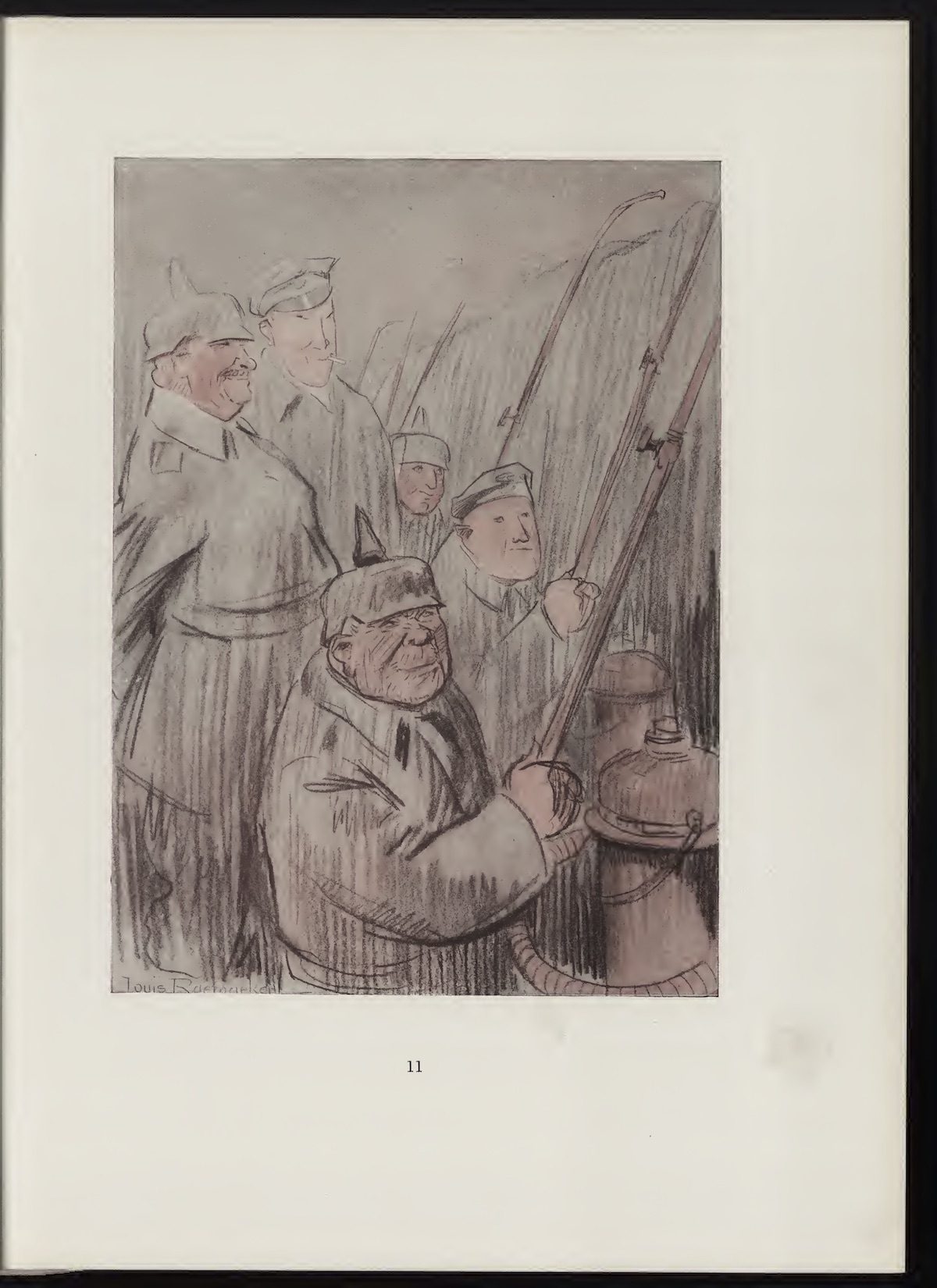
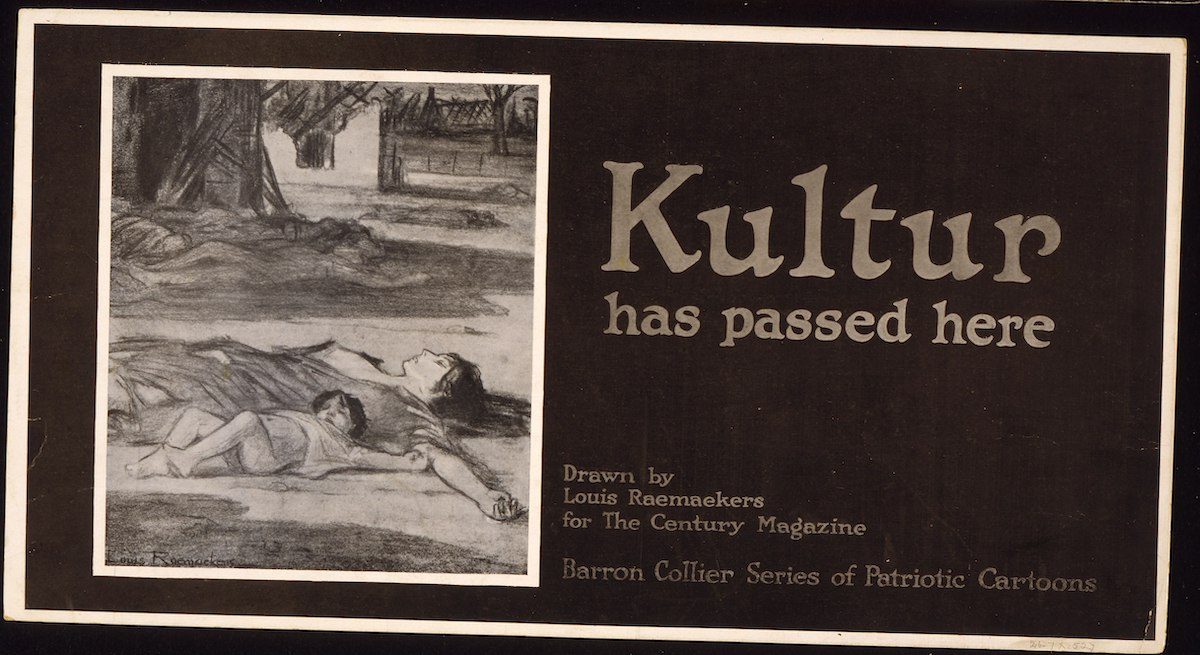

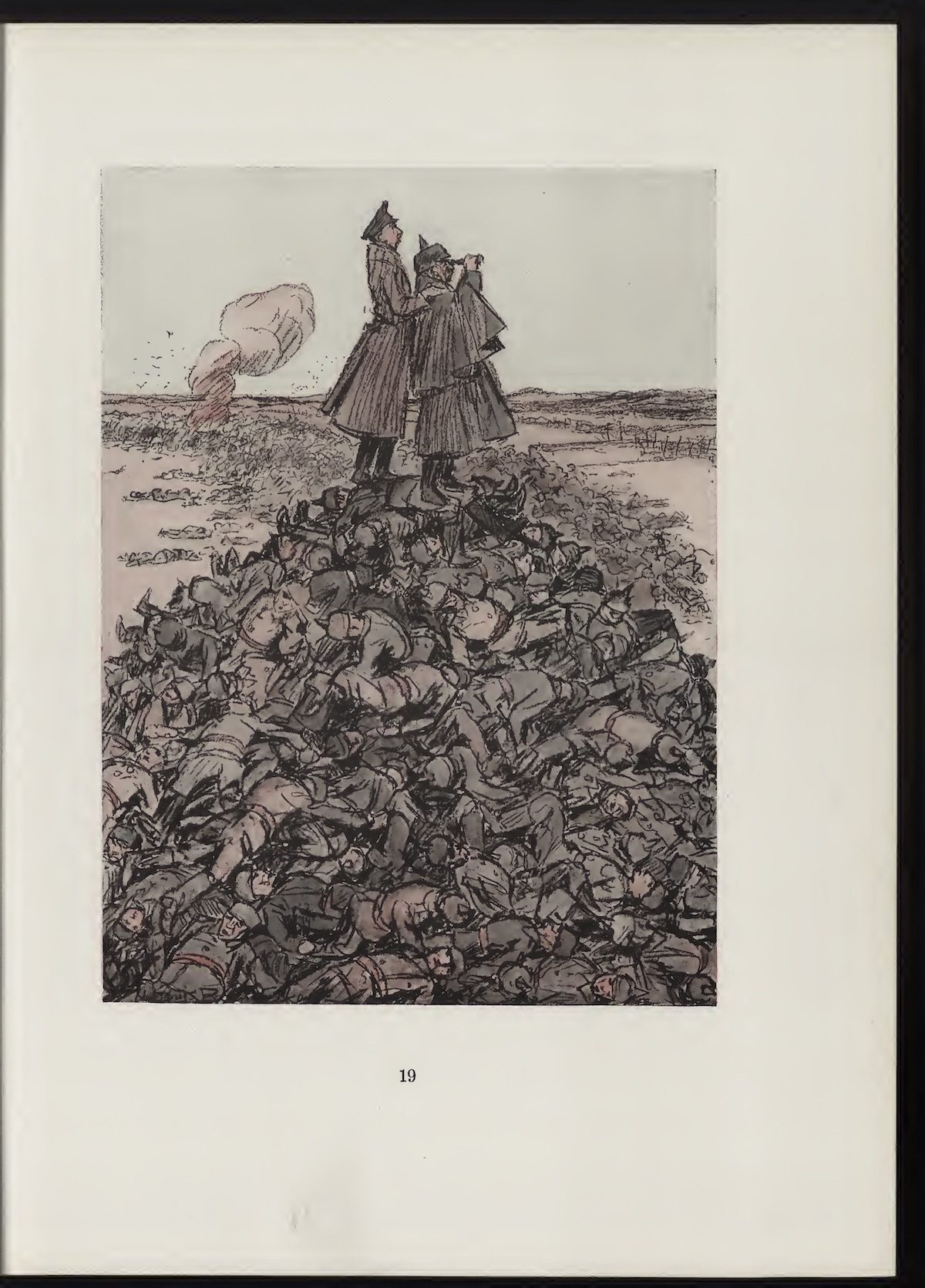
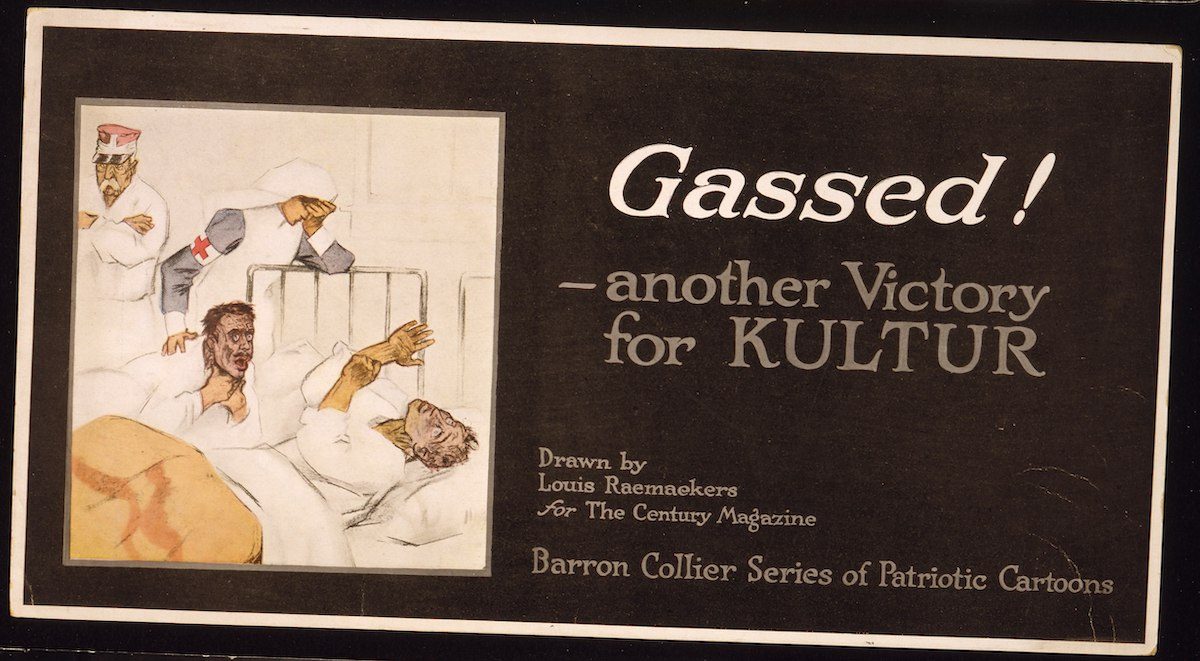
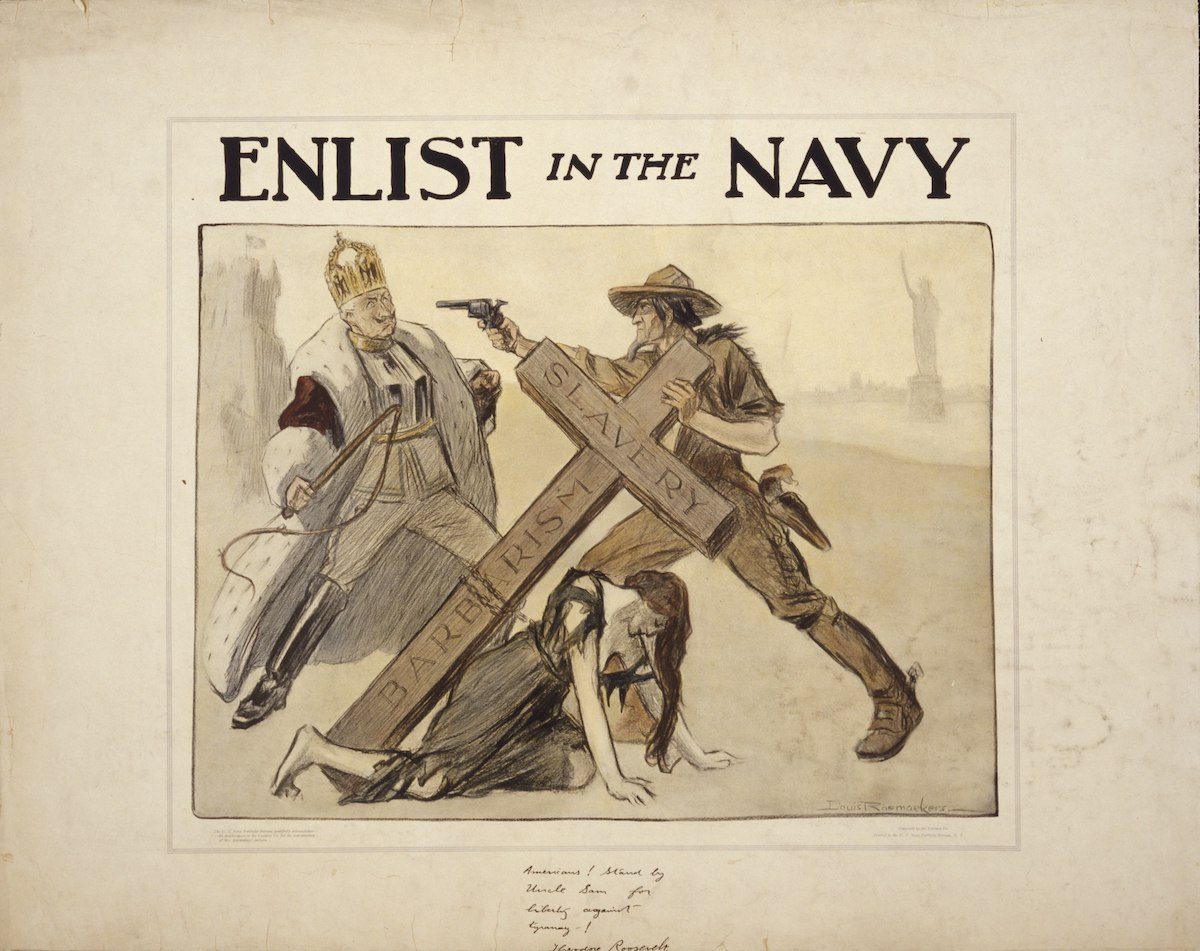
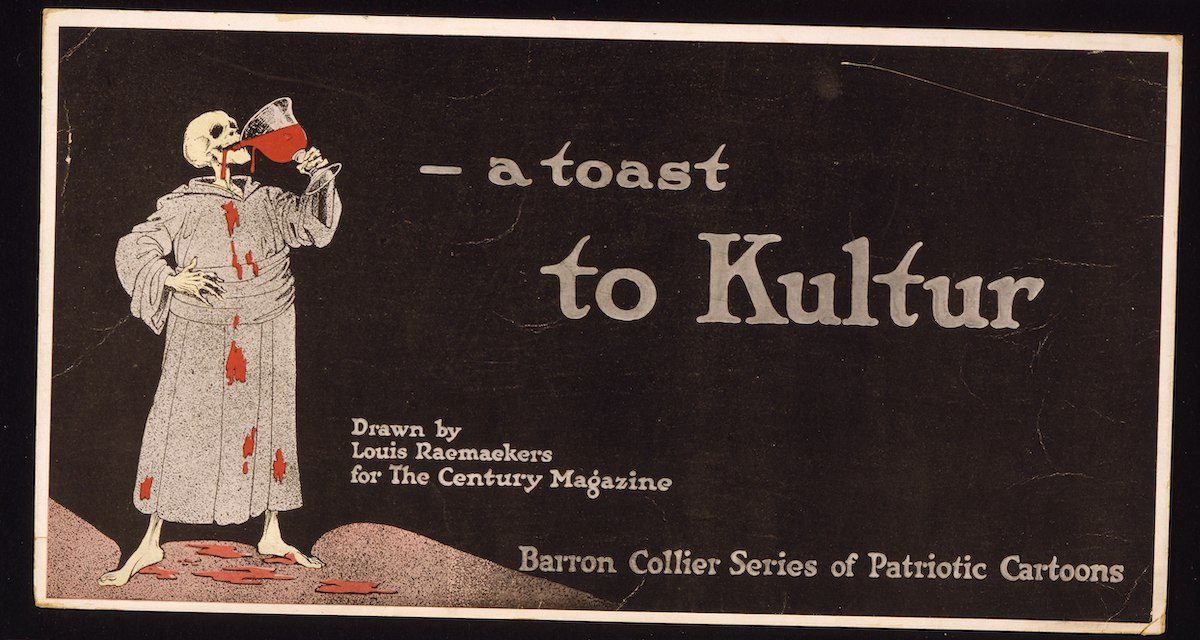
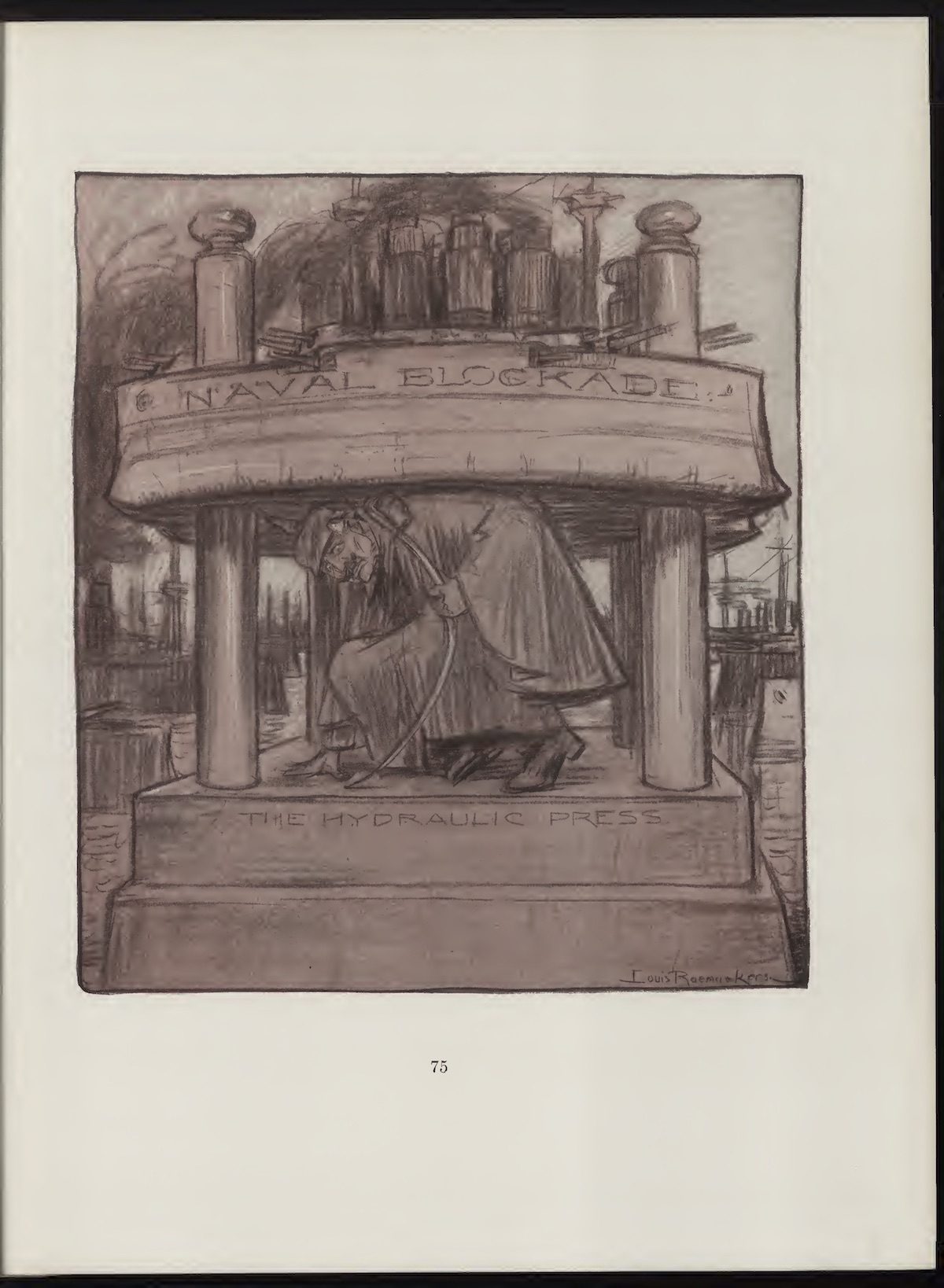
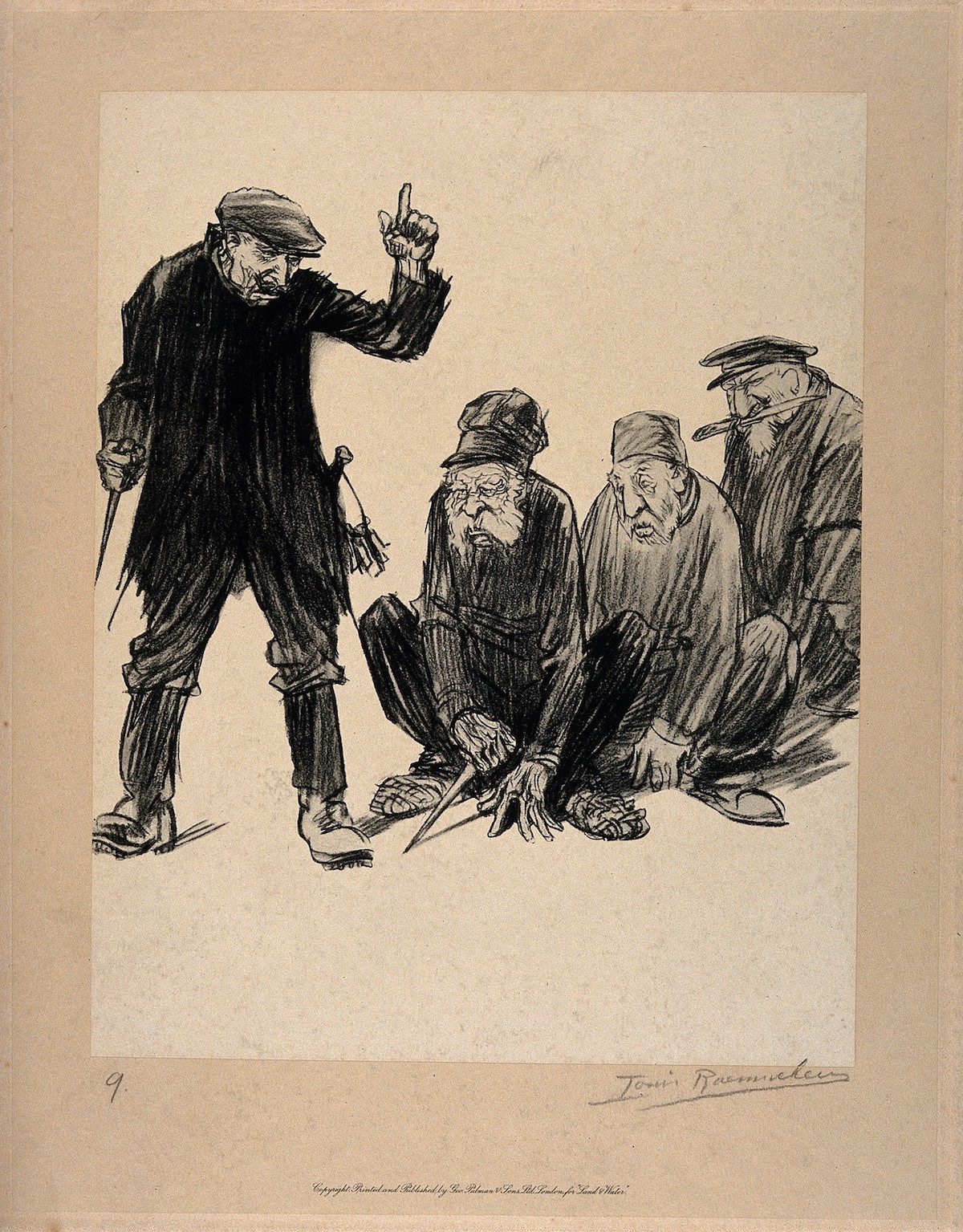
World War One: three prisoners crouch at the feet of a fourth man who incites them to action. Halftone after a crayon drawing by L. Raemaekers.
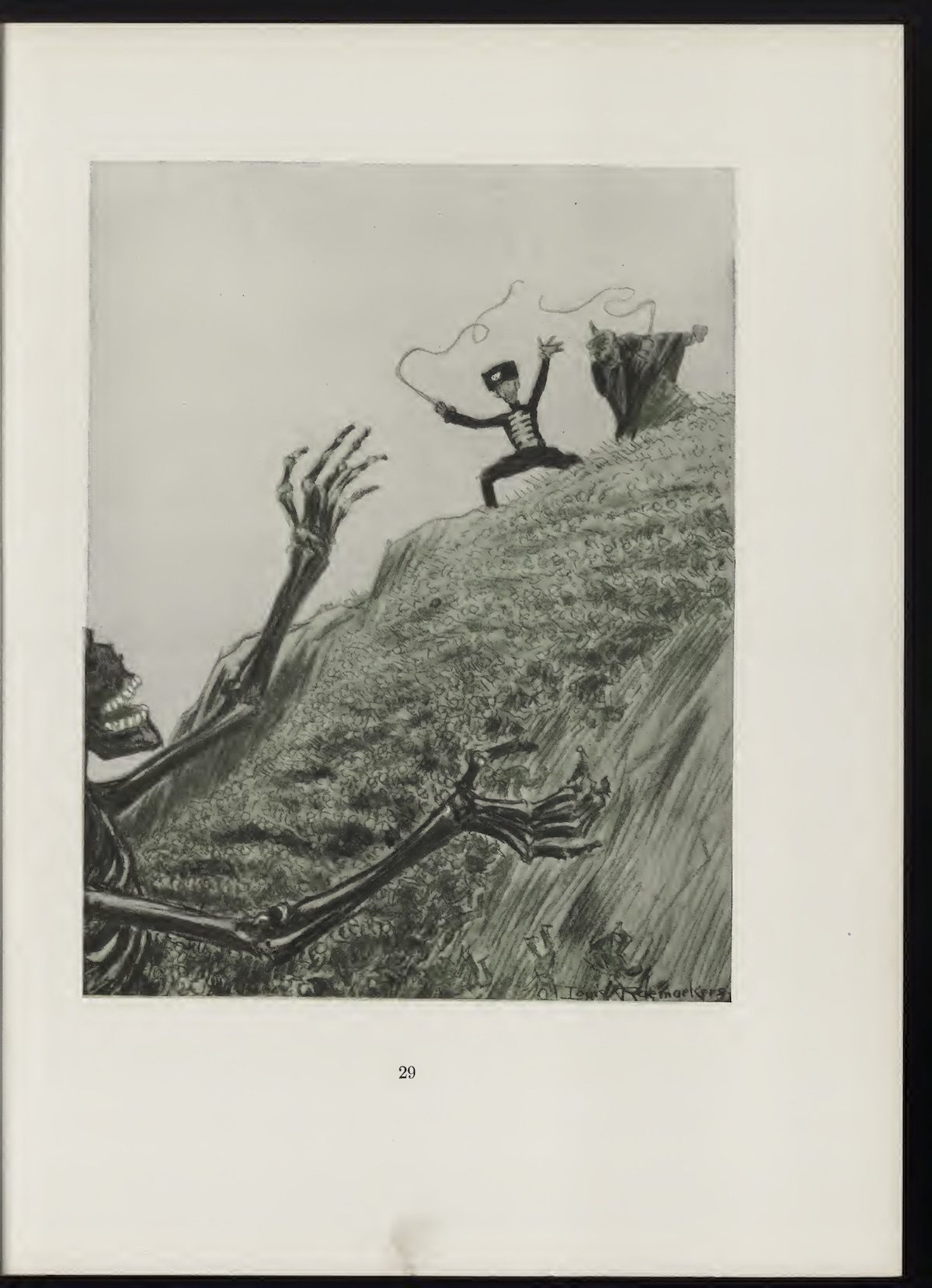
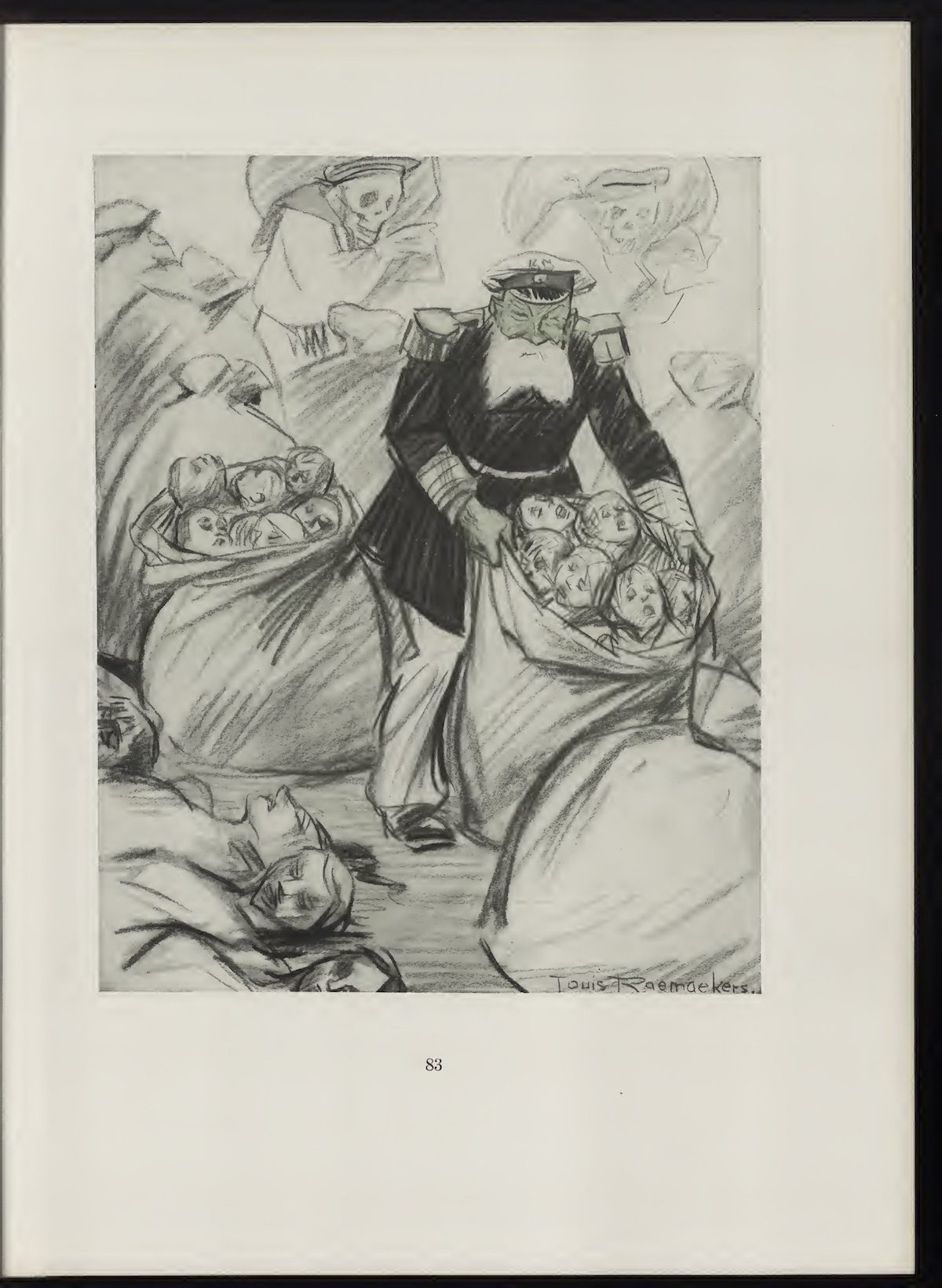
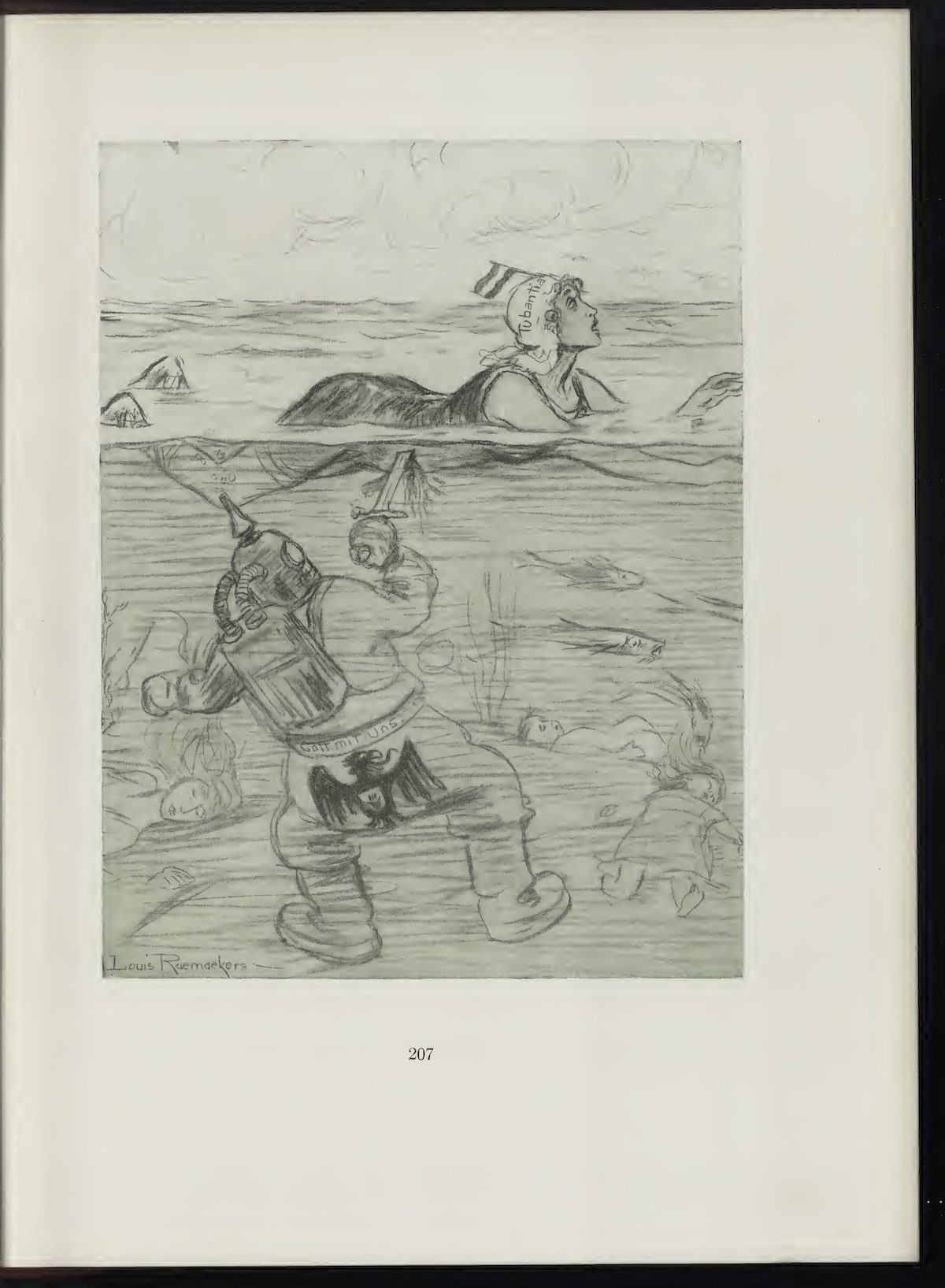
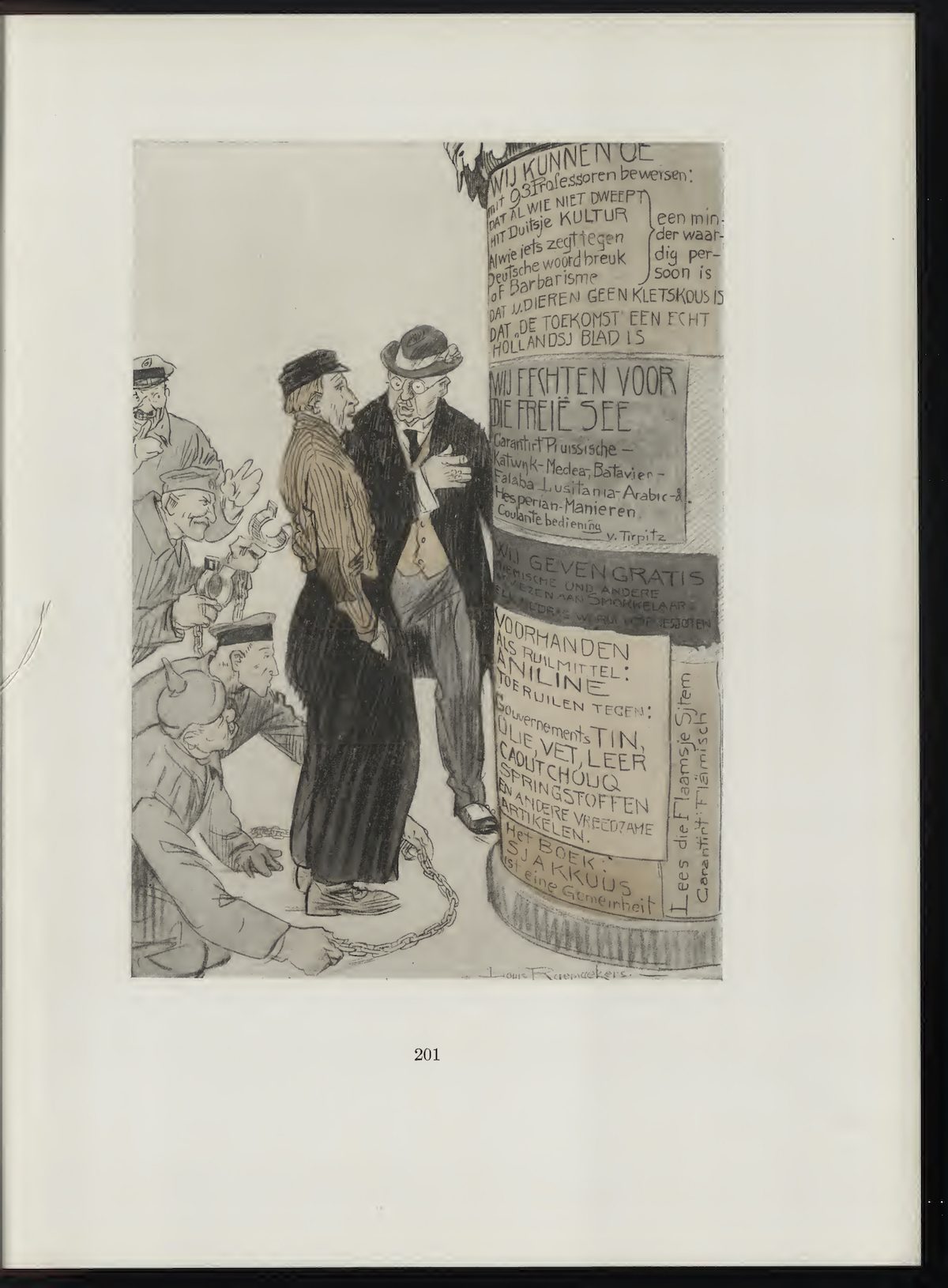
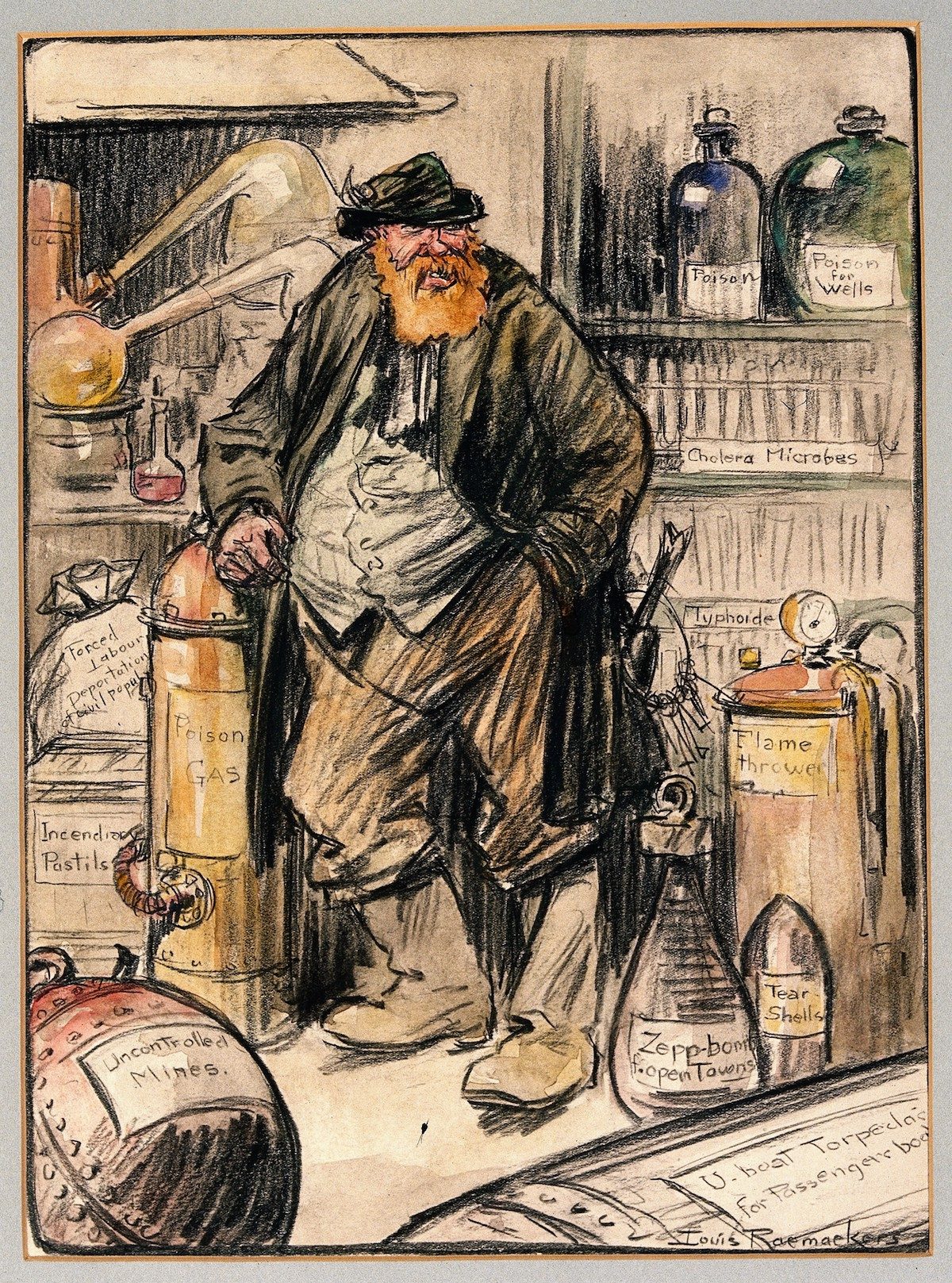
World War I: “The Hun Ministry of Munitions” 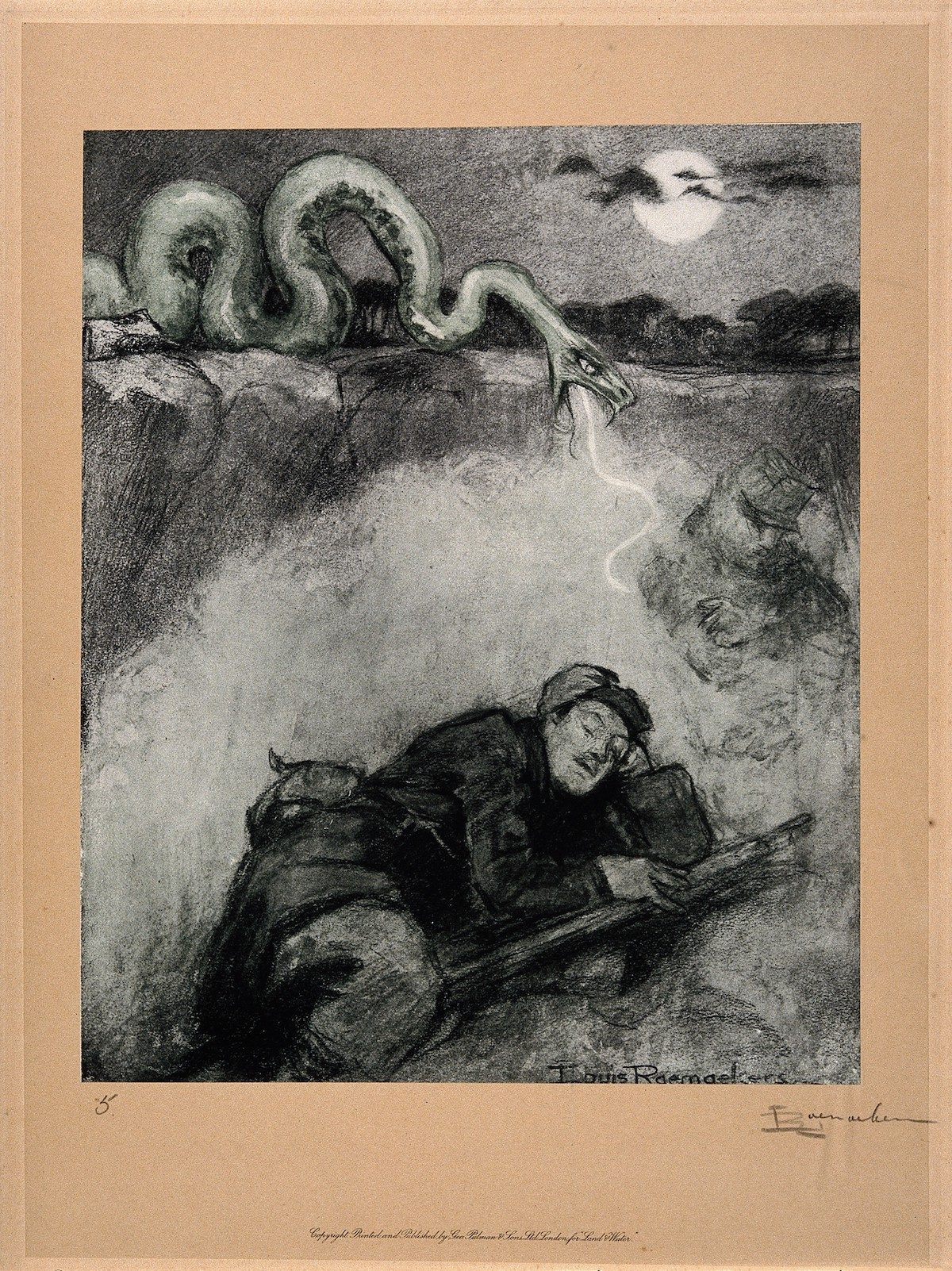

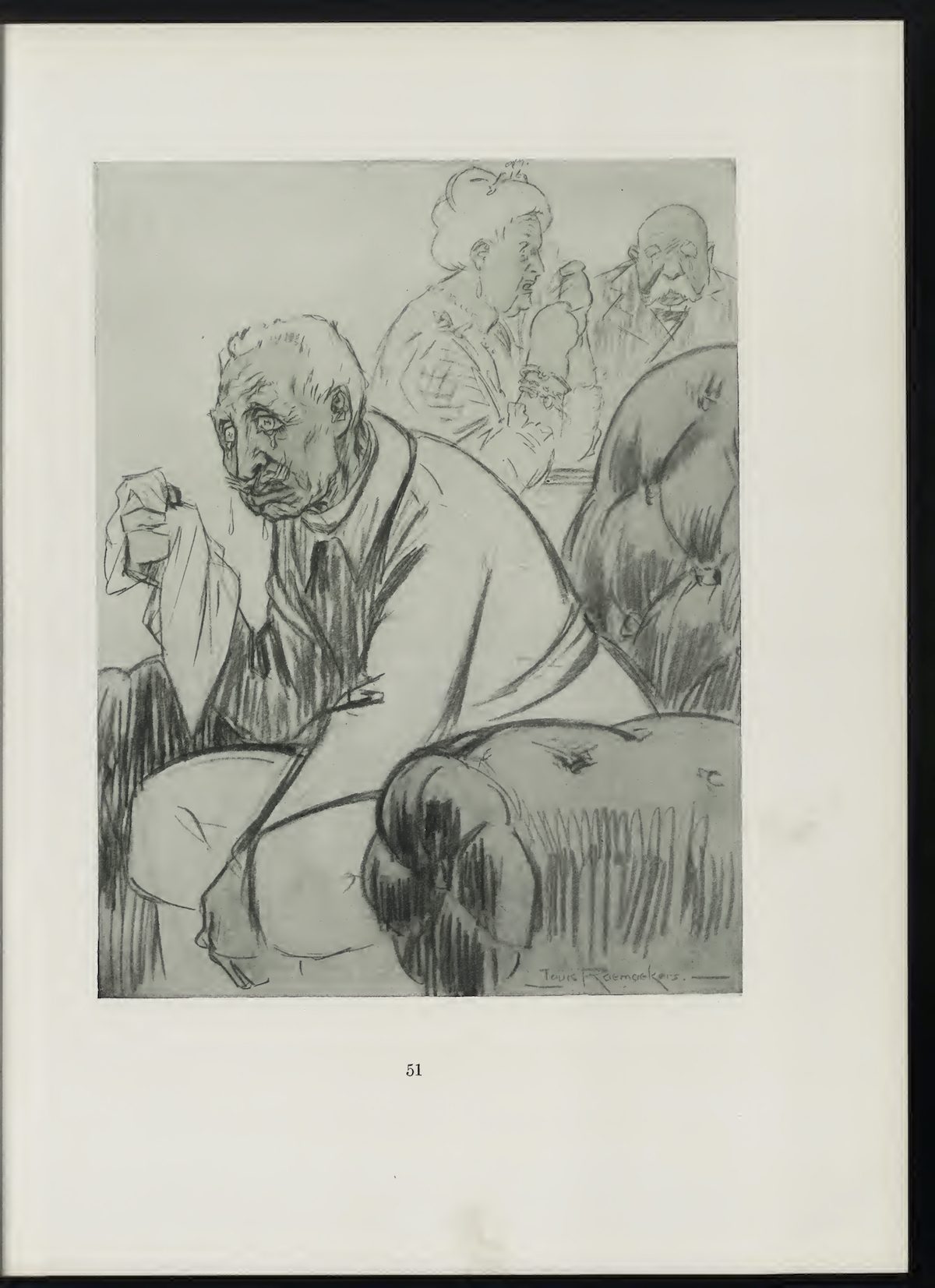

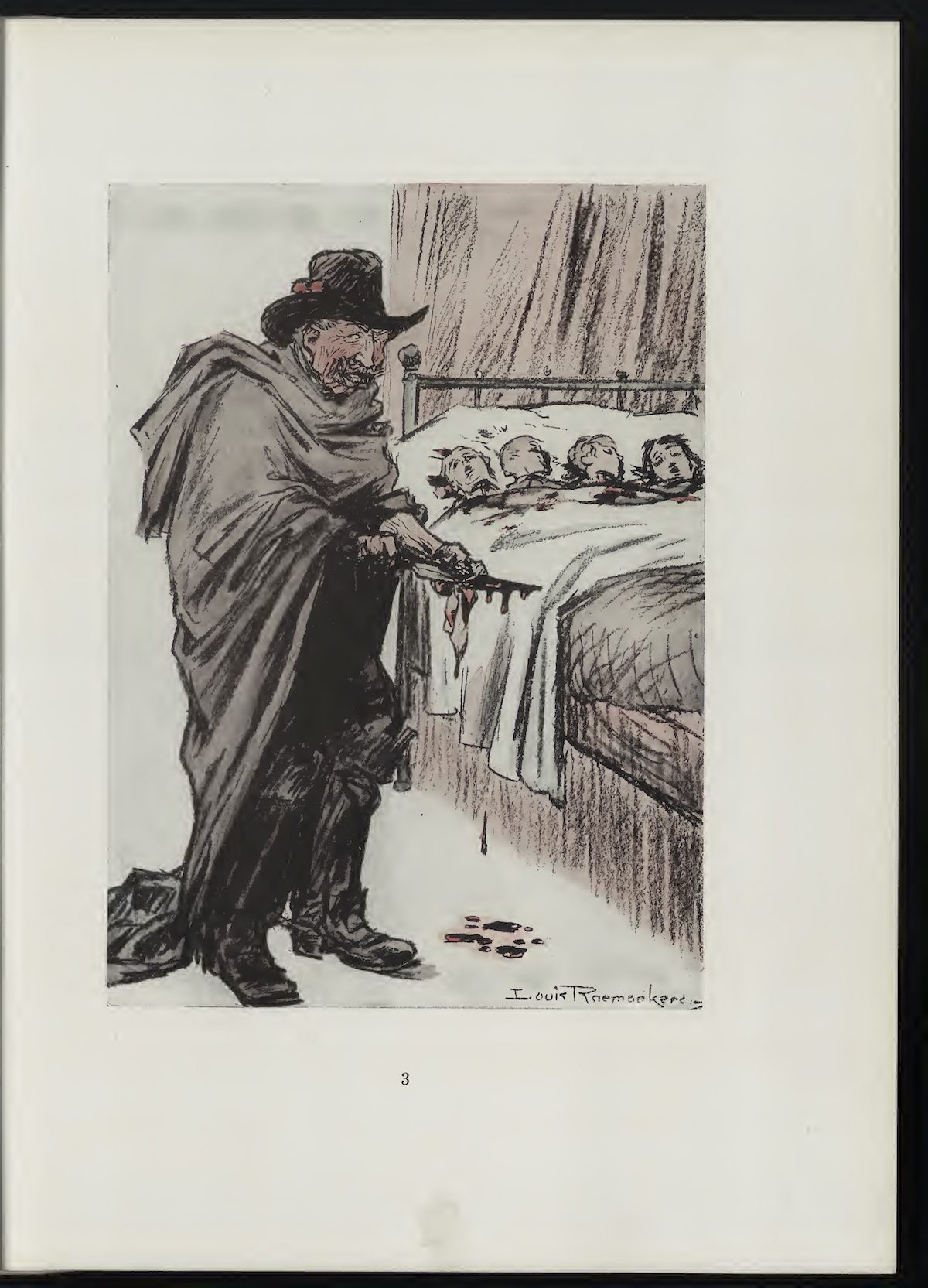

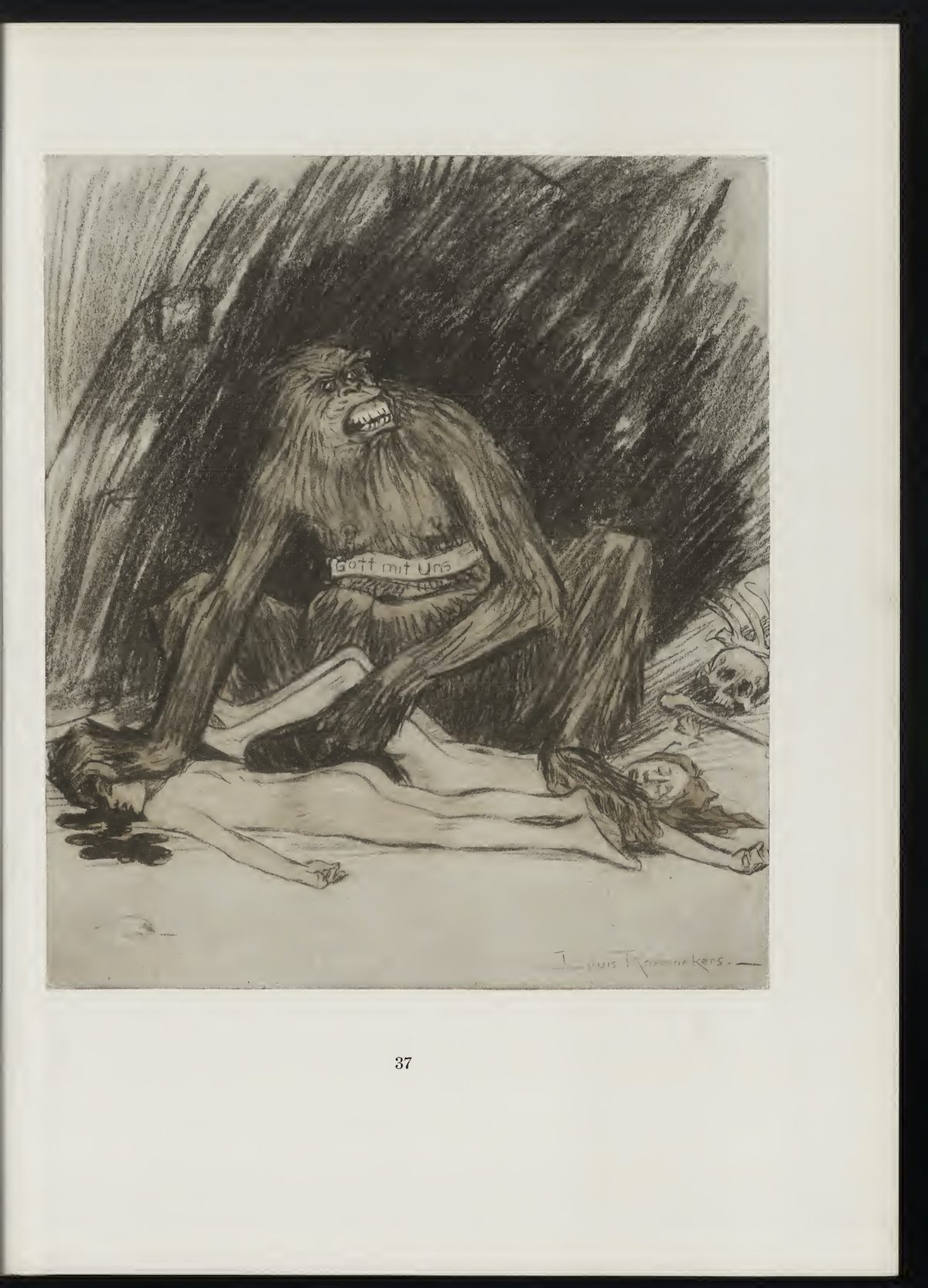

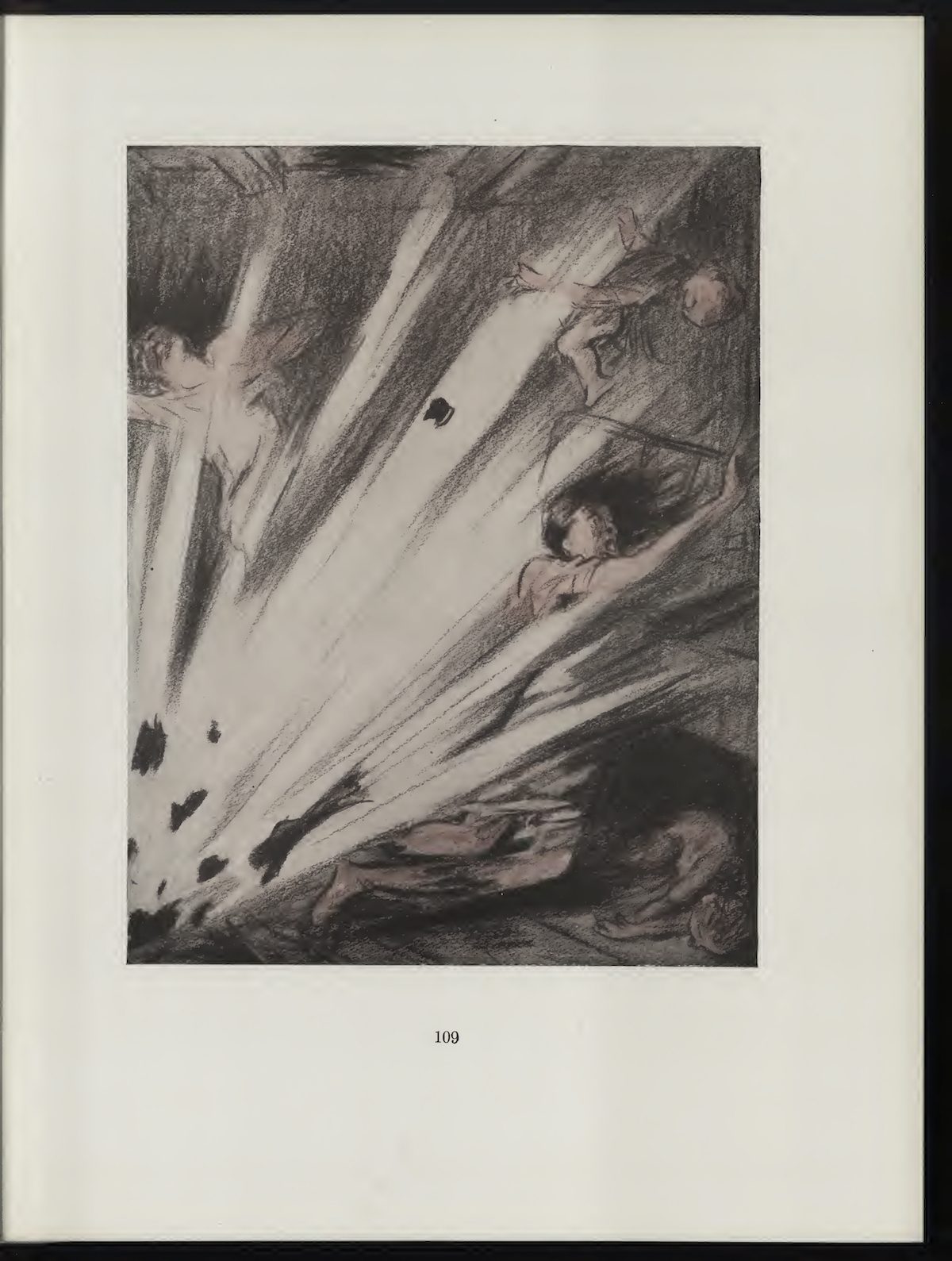
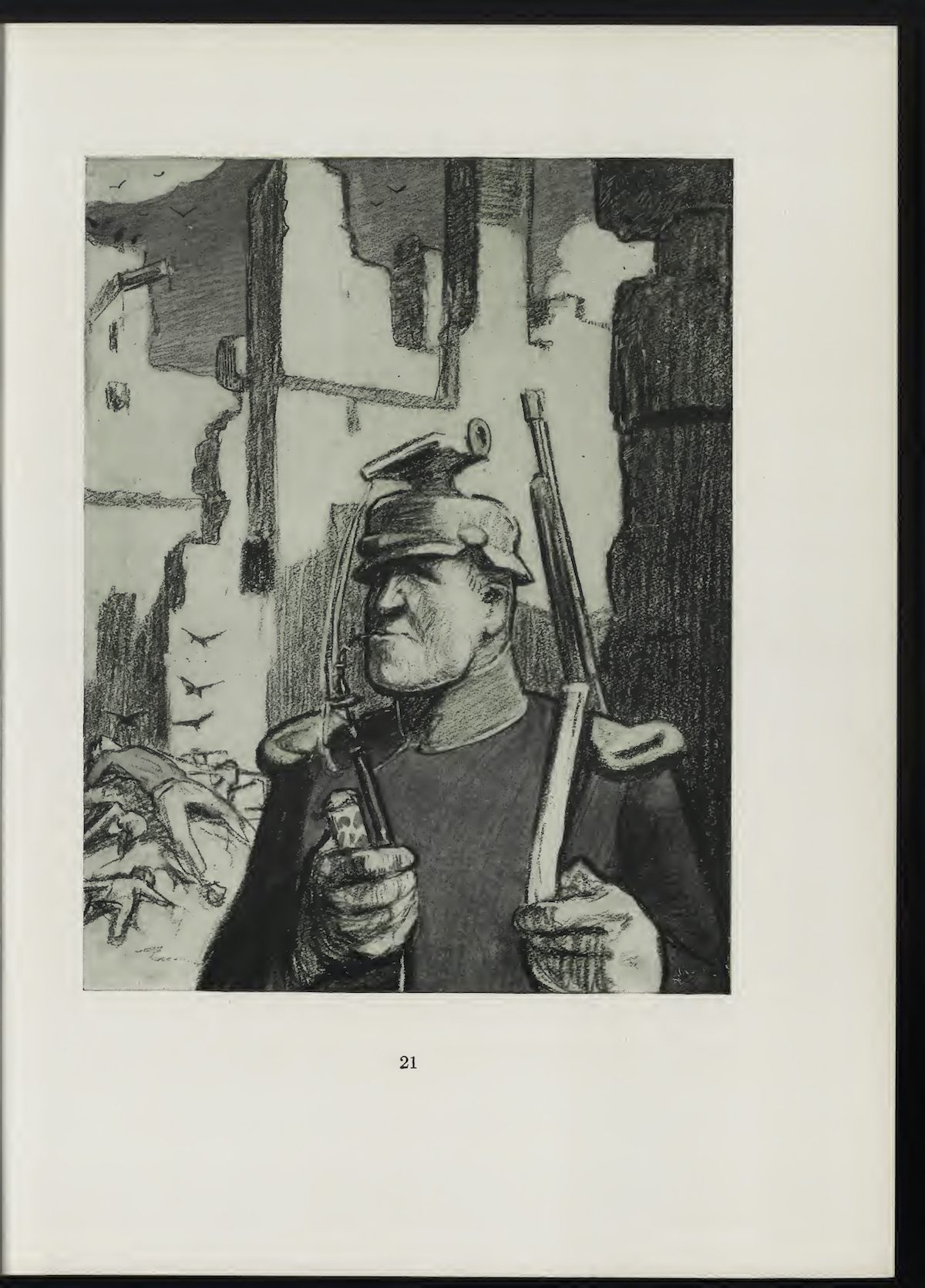
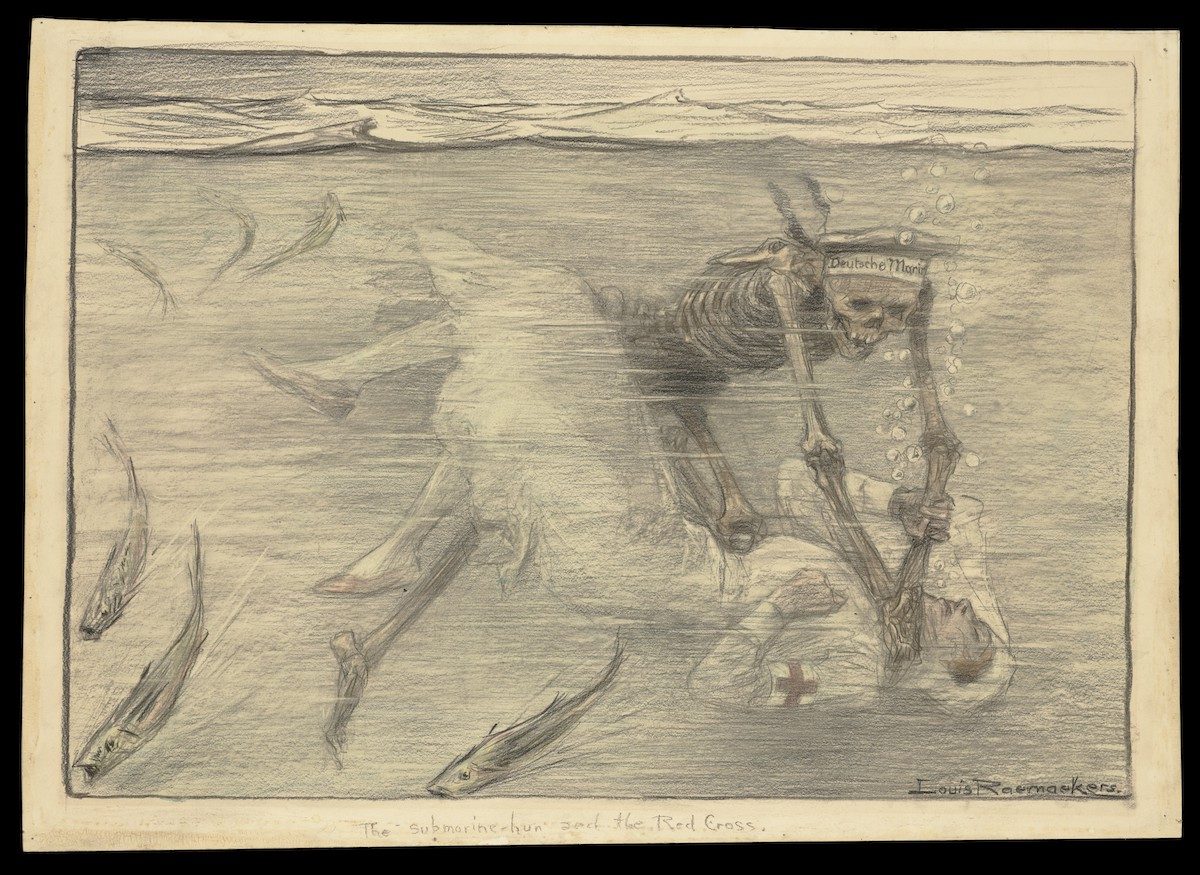
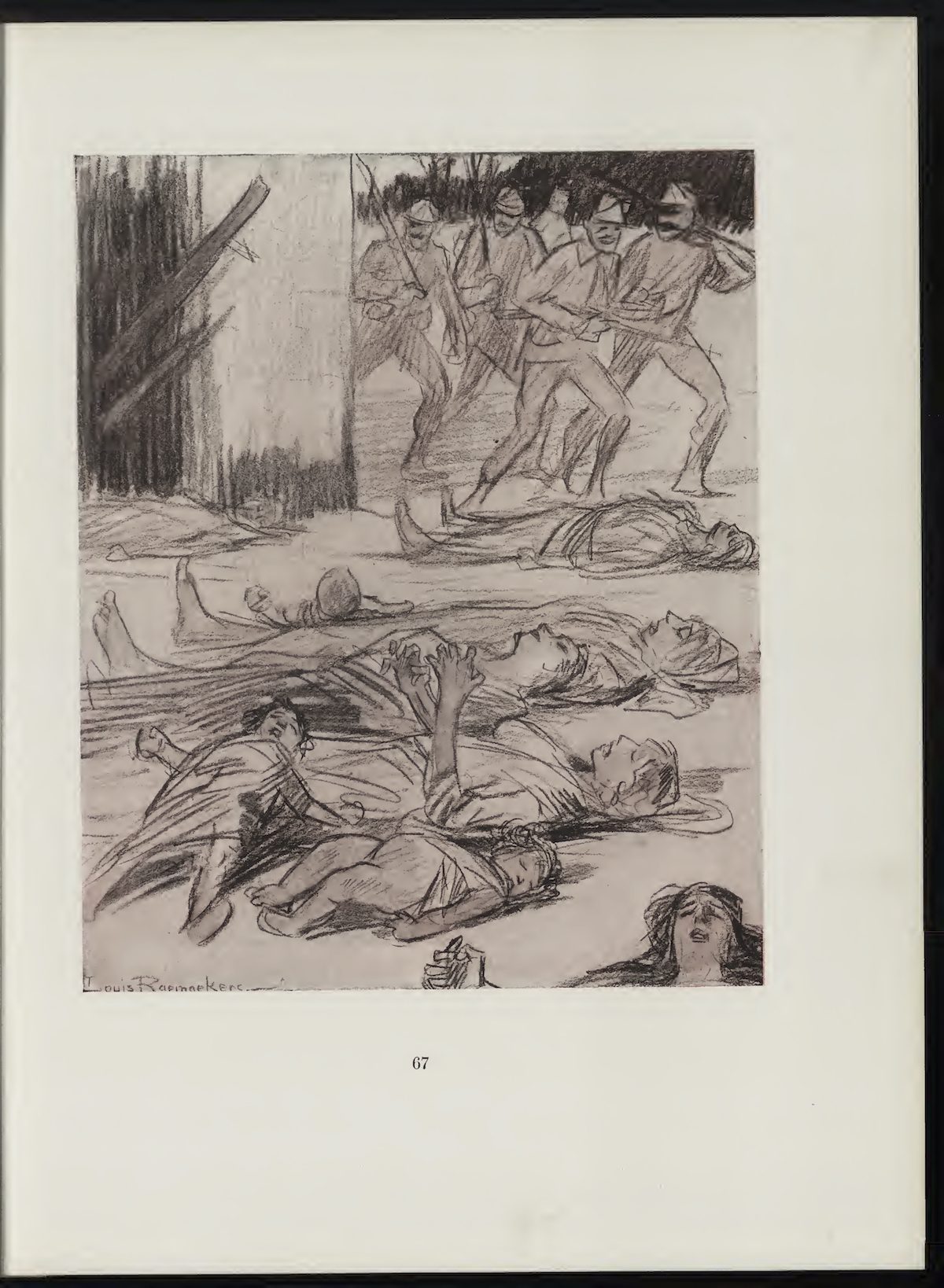
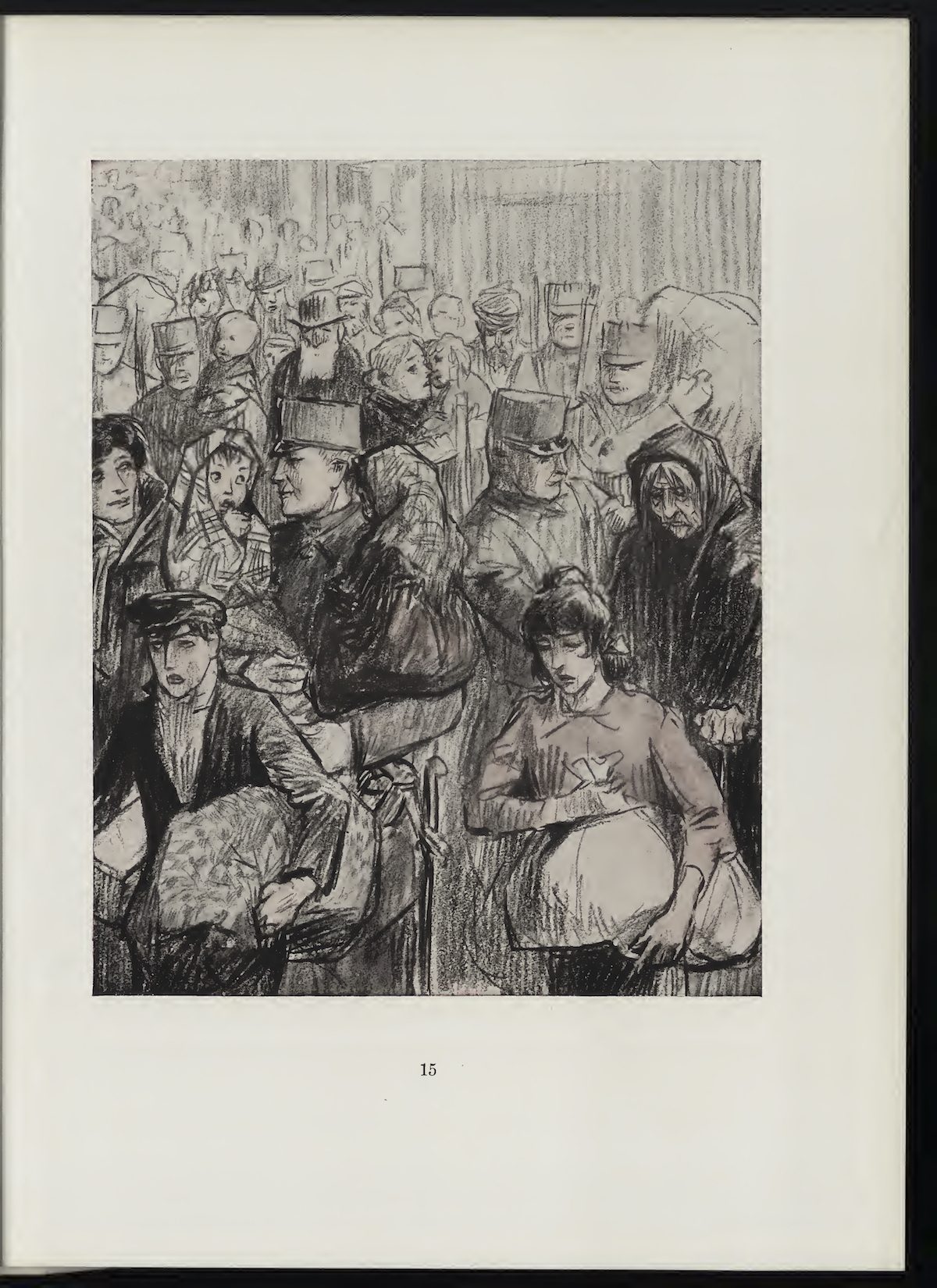
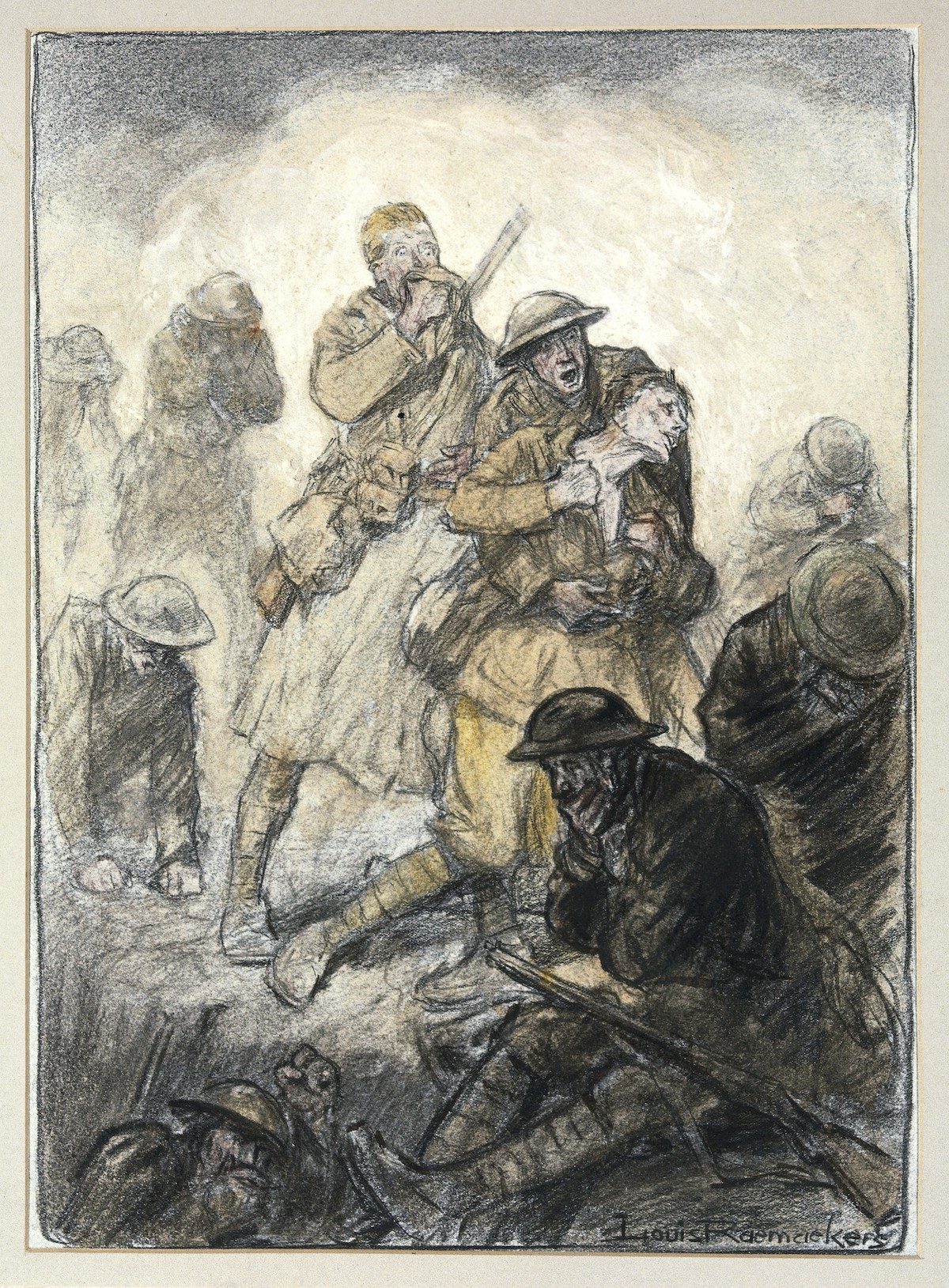
Via: Wellcome, LoC, Internet Archive
Would you like to support Flashbak?
Please consider making a donation to our site. We don't want to rely on ads to bring you the best of visual culture. You can also support us by signing up to our Mailing List. And you can also follow us on Facebook, Instagram and Twitter. For great art and culture delivered to your door, visit our shop.

